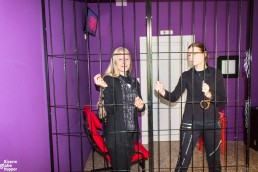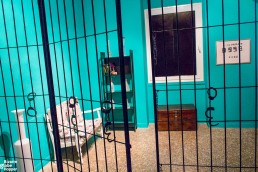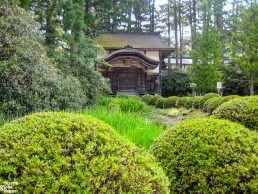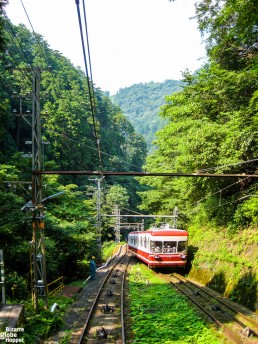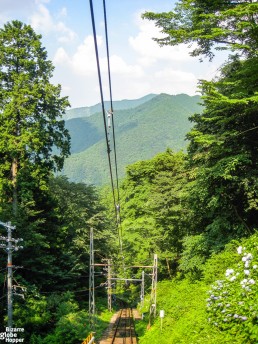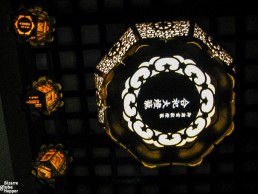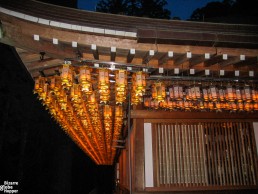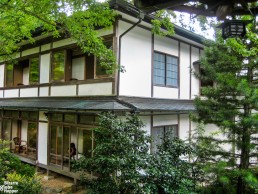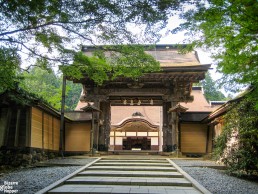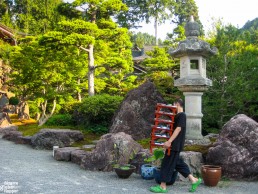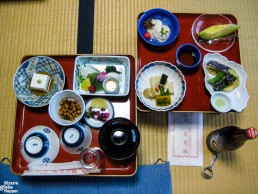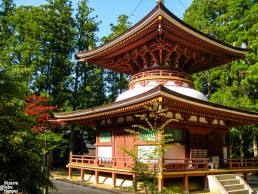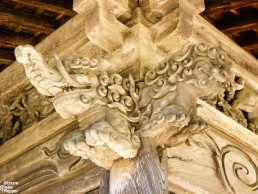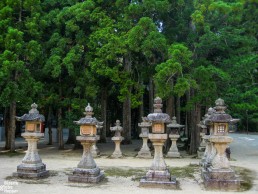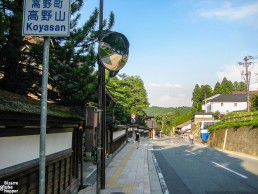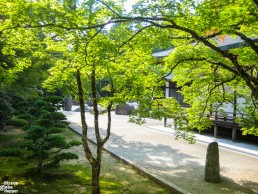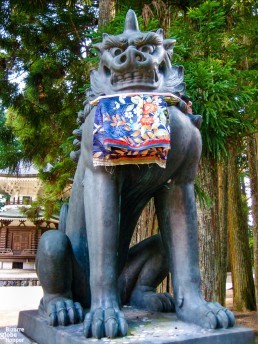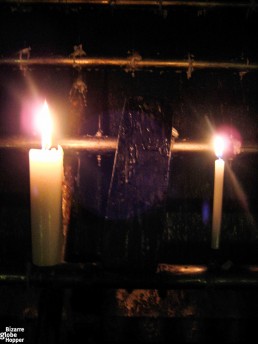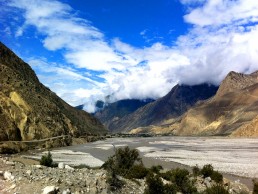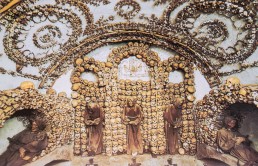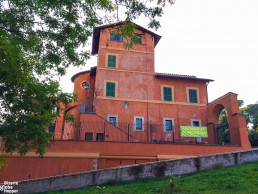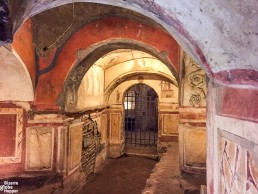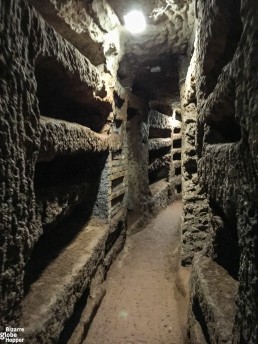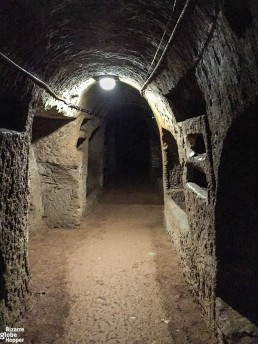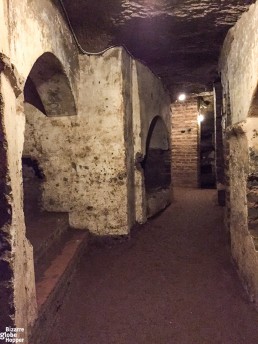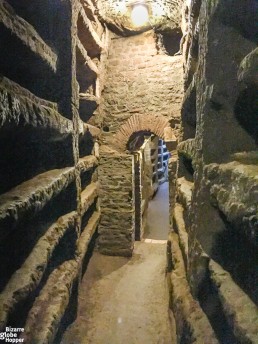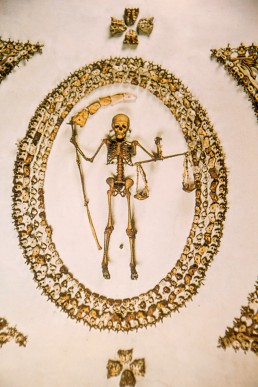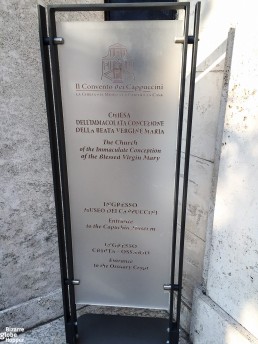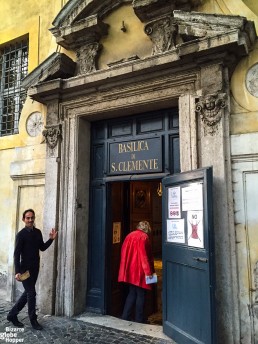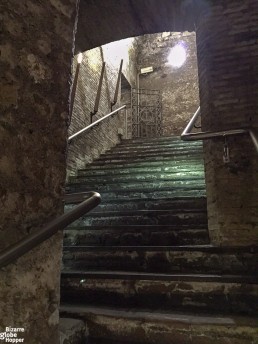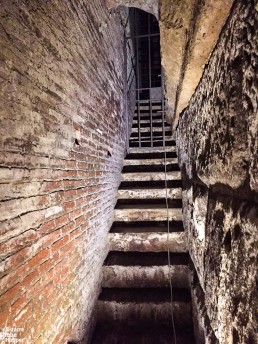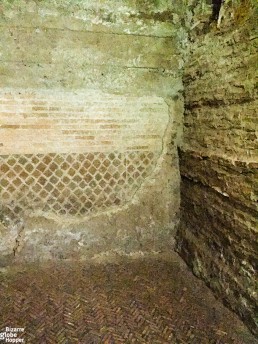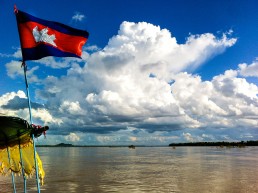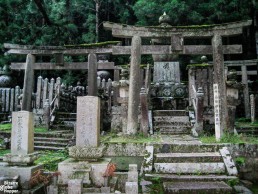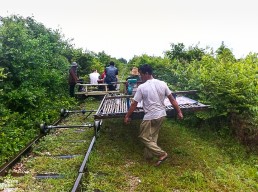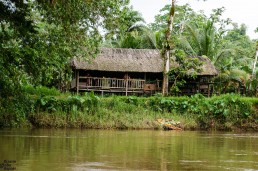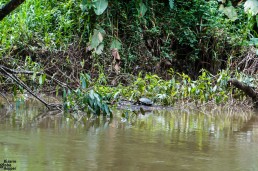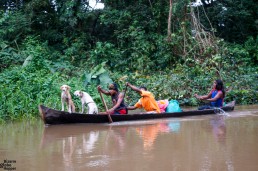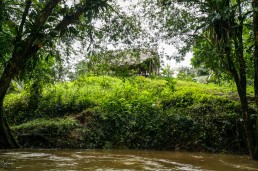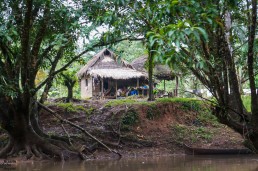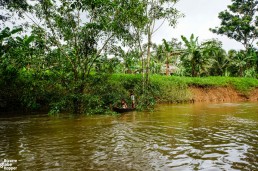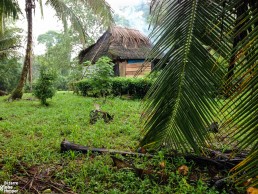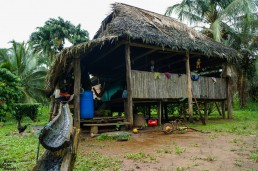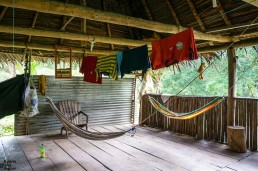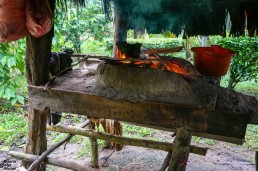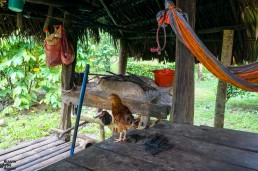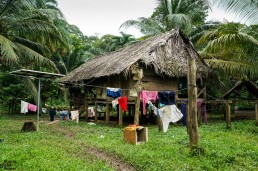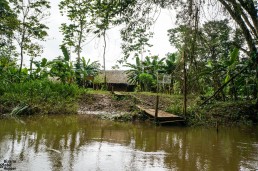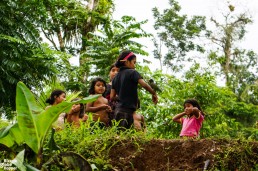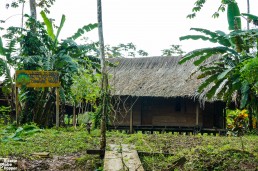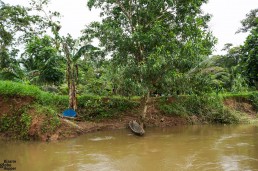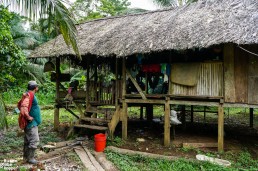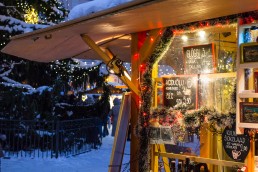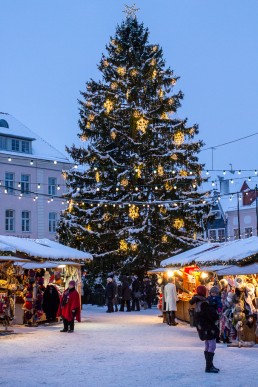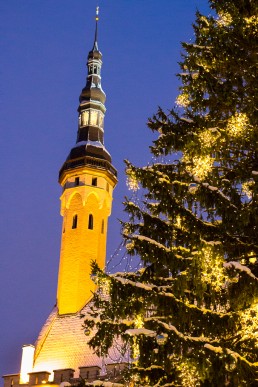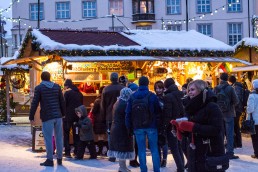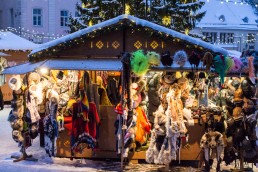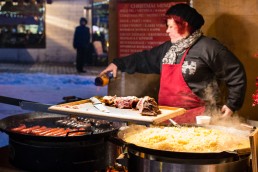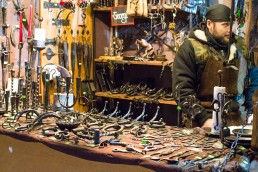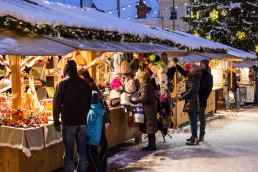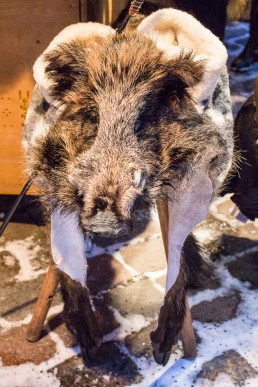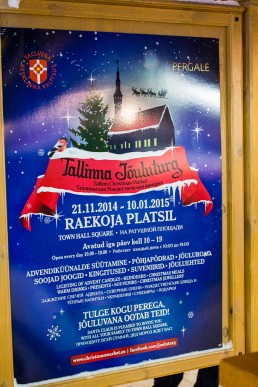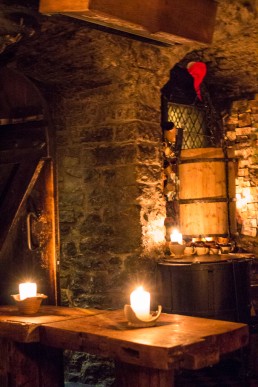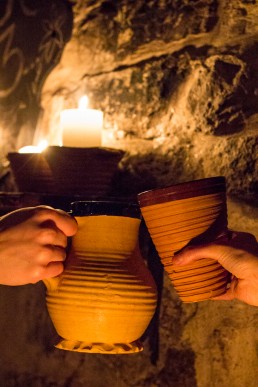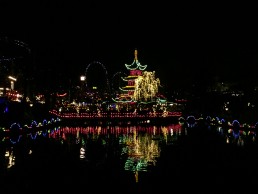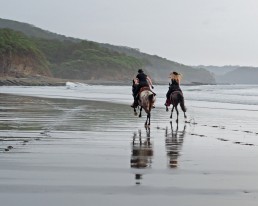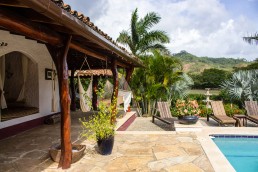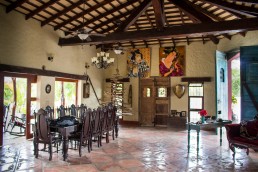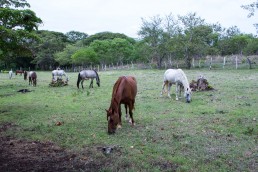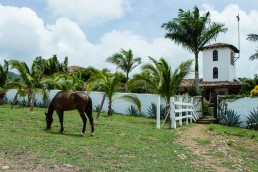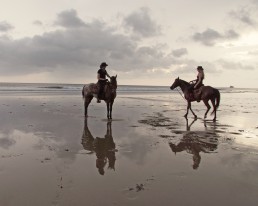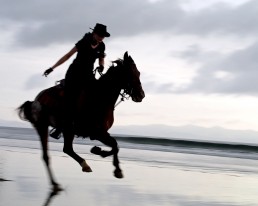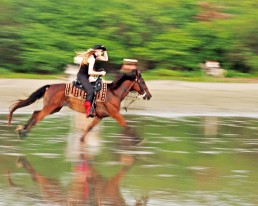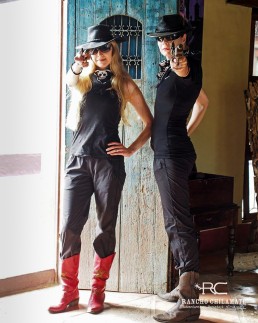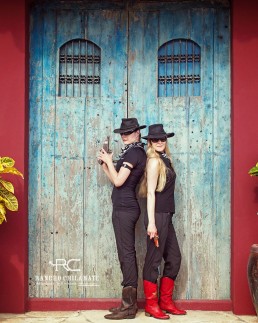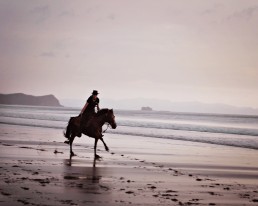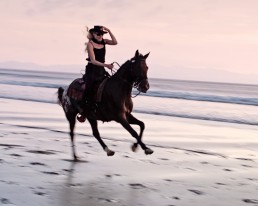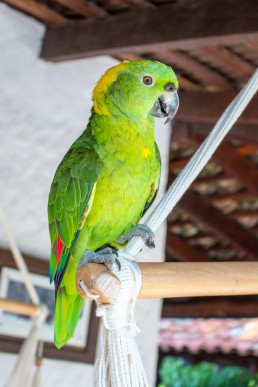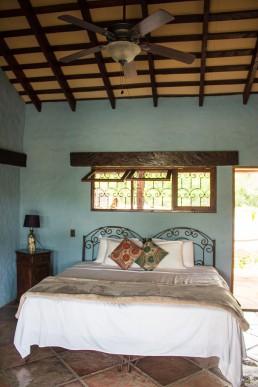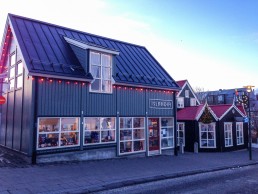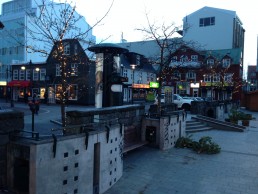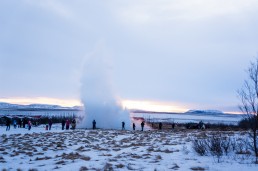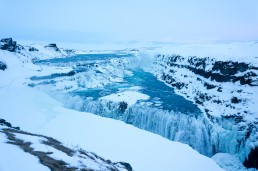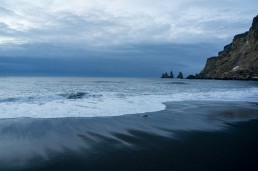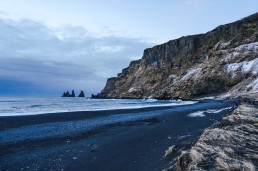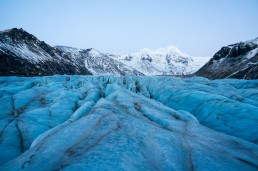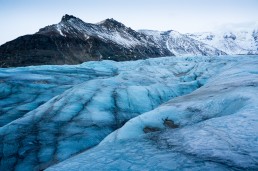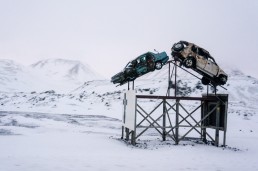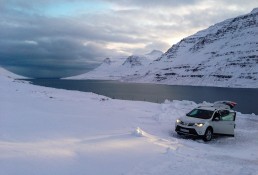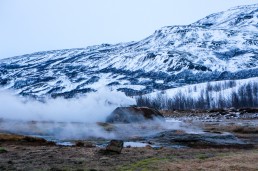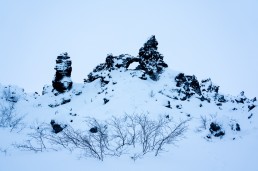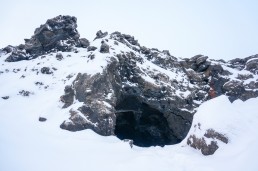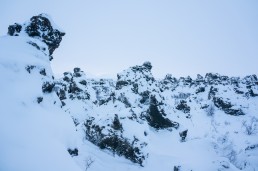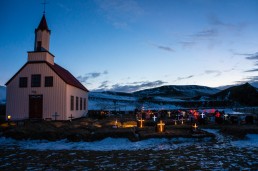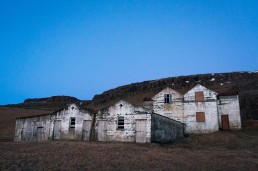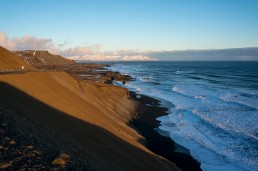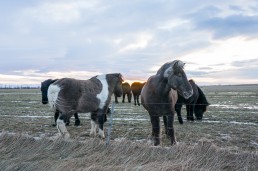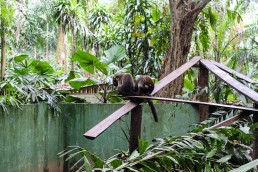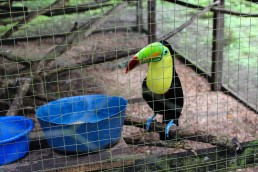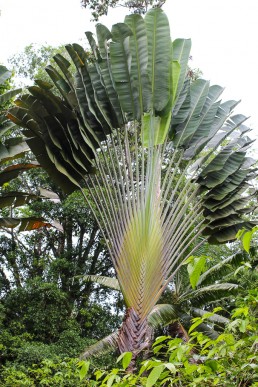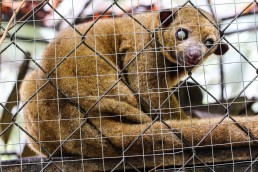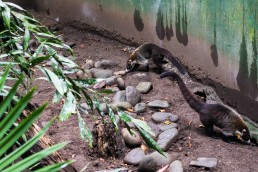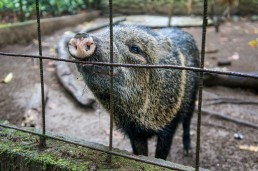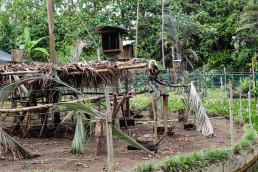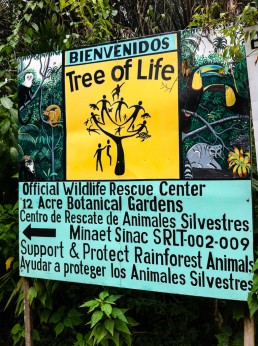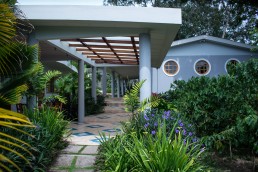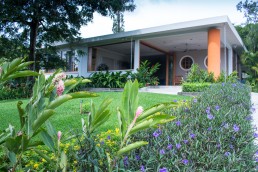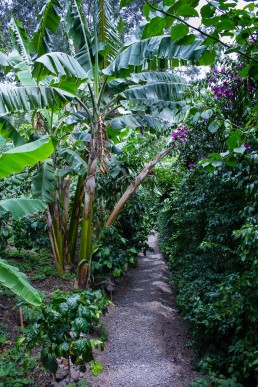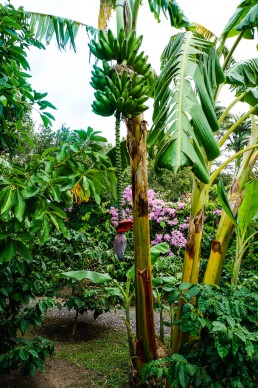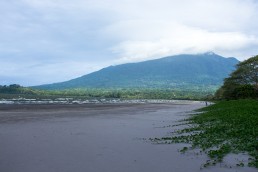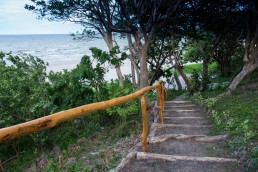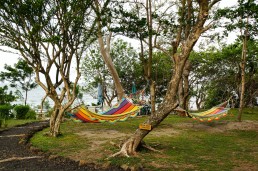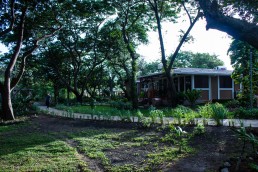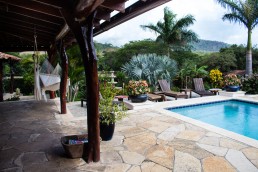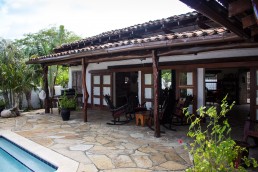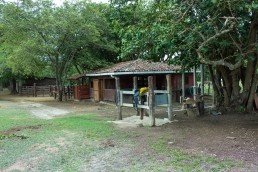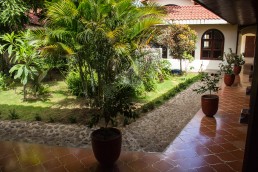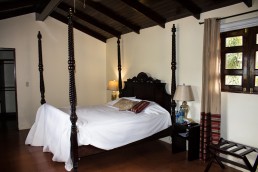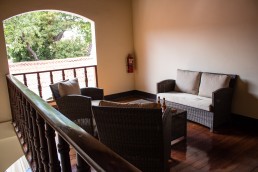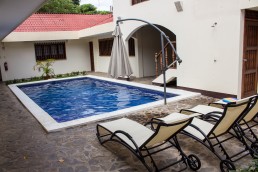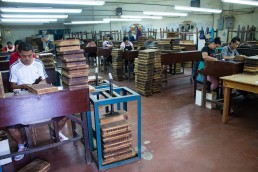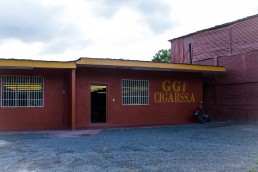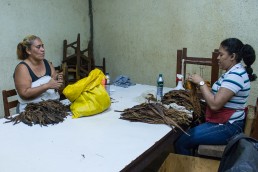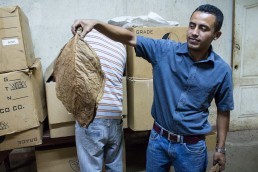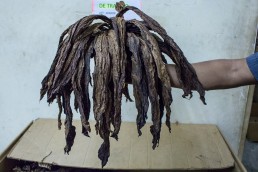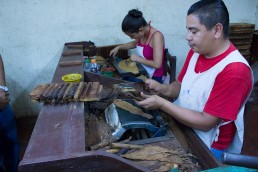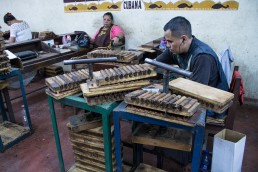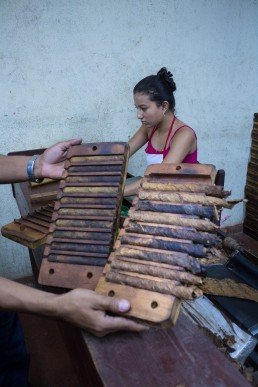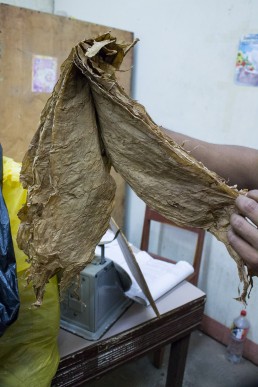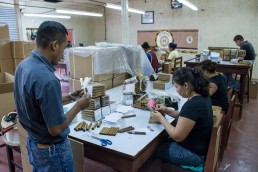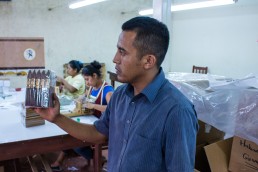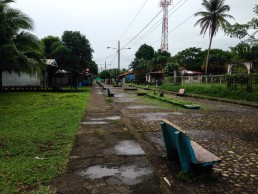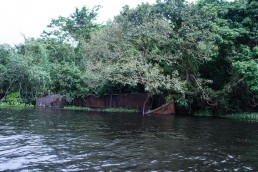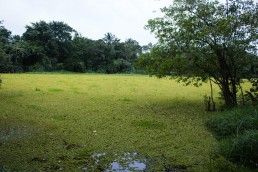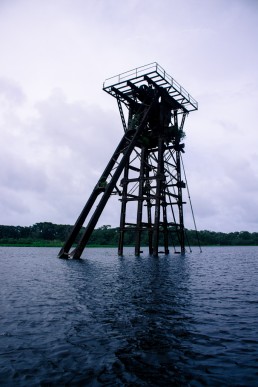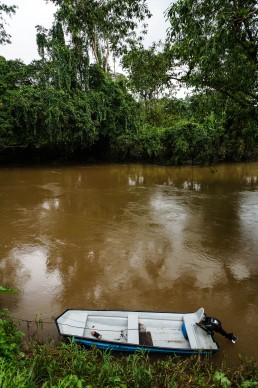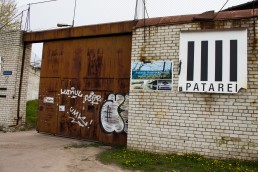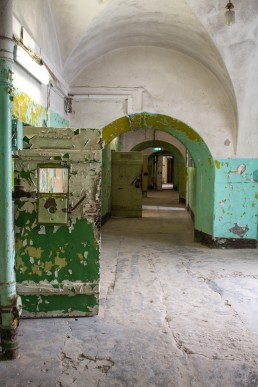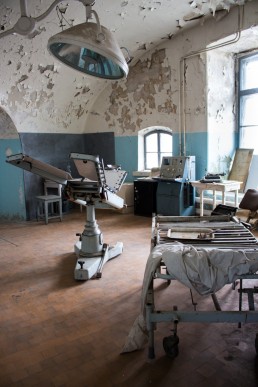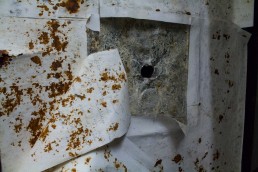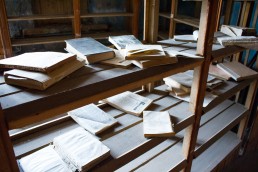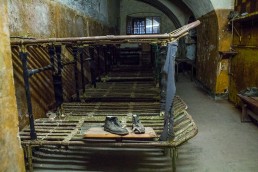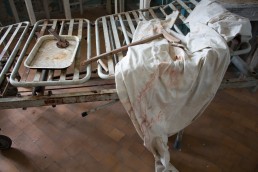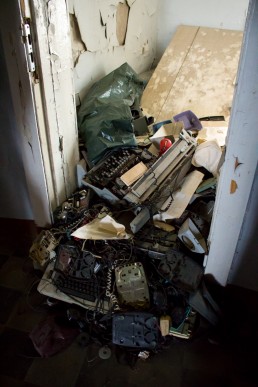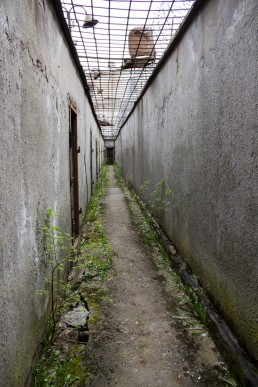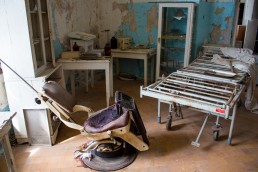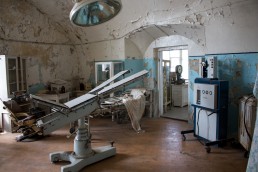Sight Of The Week: Live Room Escape Game, Athens, Greece
Would you like to experience a realistic thrill like in the live roleplaying games? Want to test your recreational and reasoning skills in problem-solving? Then this game is for you.
In the Adventure Room, you’re facing a labyrinth of puzzles to solve, and you’ll have 60 minutes to escape from the rooms you are locked in. You’ll have three different scenarios to choose from; the Bar Case, Black Queen, and the Original Game. Each features a different theme, but each game has the same basic principle.
We chose to try out the latter. In this story, you are kidnapped by a mad scientist and locked inside his laboratory. The mission is to find your way to freedom by solving different kinds of puzzles using your logic and recreational abilities. You are allowed to use some objects in the rooms as an aid, but not everything. There’s a digital clock on the wall, running backwards, like an hourglass showing how much time is left to get away.
An hour’s game time may seem like a lot, but especially if you’re playing the game only as a team of two, you’re going to have to hurry. The problems are very logical, practical and demand some swift applying of ordinary things into other, suitable purposes. For example, what would you do if you have to get a floating key out of a vase half filled with water, but it’s too far to reach by hand? What would you need to apply to get it? When you know, the ingredient needed, look around you and use it.
It’s not by far easy to win the game and succeed to escape in the 60 minutes provided. We started out way too slowly and by the time when we had our mindsets fully adapted to the game and were pretty smoothly solving the problems, we ran out of time. But don’t worry, only about 30% of players manage to get out. Though it will be irritating to lose, if you’re as competitive as we are. Next time, we will get out in time for sure! But above all, this was a fun experience! Super fun, to be frank. It’s also an entertaining and creative way to improve your team works as well as your logical skills.
There are Adventure Rooms or similar kind of live escape games in many countries. So if you want to take fun, but creative and intelligently challenging game – go try this out! Challenge yourself, your co-workers, spouse or your best friends and have an excellent time. Are you able to escape?
Have you tried out a live room escape game like this? How was it and how did you manage?
*Disclaimer: We were hosted for a game by the Adventure Rooms Greece, but all our opinions and views are entirely our own.
Finding Zen in Koyasan - Japan’s Sacred Mount Koya
Koyasan on Mount Koya is one of Japan’s most sacred sights and a place to have a pause. The Buddhist and almost overly tranquil atmosphere demand you to stop, breathe deep, and listen to yourself. It’s a place for meditation, but also a great place to be active with excellent sights to discover.
Koyasan celebrated its 1200th anniversary in 2015 and gained a lot of attention. And thanks to Japan’s recent hype and rise on numerous traveler’s bucket lists now in 2018, Koyasan is also receiving even more visitors.
Koyasan is a small town in the Wakayama Prefecture, but it has a lot to offer for travelers. You can spend the night in a temple lodging inside a Buddhist temple, see a distinct fire ceremony, and walk among centuries-old gravestones covered in moss in the cemetery of Oku-no-in.
And all this while feeling the strange peacefulness hanging in the air all the time.
The Best Sights of Koyasan, Mount Koya
Koyasan is an active monastic center of esoteric Buddhism, founded by a monk called Kōbō-Daishi (Kūkai) some 1200 years ago. From 2004 it has also been a UNESCO World Heritage Site. It’s located in the Wakayama Prefecture, south of Osaka.
This little village at the top of Mount Koya is a welcoming place, and we had a warm feeling from the moment we arrived. Also, many Japanese people visit Koyasan every year. Why they come here, is one of the legends that Koyasan has.
The pilgrimages visit the mausoleum of Kōbō-Daishi (Kobo Daishi), where the embalmed body of this fabled monk is said to be only in eternal meditation, not dead. And if you ask his body for salvation, you will have it.
Wheather this legend is true or not, there’s definitely something mystical in Koyasan. Maybe it’s the atmosphere of tranquility and peace all around. Or perhaps it’s the smiles of the monks walking past you, who somehow reflect a strange, and marvelous inner peace in their presence.
Oku-no-in is One of the Best Sights Koyasan Has to Offer
The Oku-no-in is the old graveyard in the middle of a thick cedar forest (or ”the inner yard”). You can take a short, 10-minute bus ride from the center of Koyasan to the bus stop of Okunoin-mae. The bus stop is called Senjuinbashi.
When you enter the Oku-no-in, you will see moss covered, crooked tombstones all over each other and narrow paths leading directly to the thick, dark forest. It will make you feel like you just stepped through a time portal into Feudal Japan.
Walk through the Oku-no-in to the Todoro Hall (Hall of Lamps). There are more than 10000 lanterns, which are eternally lit and the sight is just mesmerizing. It felt like the time stood still.
Behind the Todoro Hall, about 1 km away from the bus stop, stands the famous mausoleum of Kōbō-Daishi (Gobyo). The story goes that if you ask him for salvation, you shall have it. Thousands of Japanese come here every year for that. And you’ve also come this far, so why not?
Experience Oku-no-in Cemetery at Nightfall
But whatever you do, don’t miss a walk in the Oku-no-in at night! When the darkness descends, it’s a whole another world. The only, eerily dim lights come from the old stone lanterns here and there.
The shadows dance in the specks of light and will make your imagination go overload. Even if you don’t believe in ghosts, here you will start believing. Or if you still don’t, at least you’ll begin to feeling odd and looking over your shoulder, just in case.
And if you like long, peaceful walks in the tranquility of graveyards, you will love to walk in Oku-no-in. It’s a cemetery like no other I’ve ever visited, a world of its own – literally speaking.
Have a Koyasan Temple Stay on Mount Koya
Around fifty temples in Mount Koya provide overnight stays accompanied with vegetarian food options. We had our Koyasan temple stay in the Eko-in temple for its proximity to Oku-no-in and a walking distance from the center of Koyasan. Eko-in temple is maybe the best temple to stay in Koyasan.
We got a traditional tatami room with a serene garden view and futon beds on the floor. It was ascetic, yes, but that’s how it’s supposed to be. We got settled, opened the paper doors into the Zen garden outside, sat on the wooden chairs, and drank a cup of green tea.
Let the time flow and feel the Zen, without giving any thoughts to the hassle of the outside world. You will do yourself a favor.
When our vegetarian dinner arrived, it included various suspicious items to me, as I am quite a picky eater. However, most of the items tasted good. And we got great Japanese beer to accompany our exotic dishes.
Attend the Morning Prayers and the Famous Fire Ceremony at Your Temple Lodging in Koyasan
The monks have early mornings, which means they also retire early to bed in the evenings. If you have also signed to participate in the ceremonies the next morning, I suggest you do the same. With the pitch black darkness and profound silence already at about 10 p.m., you’ll have no problems with falling asleep.
Around 5 a.m. a monk came to pick us up to attend the morning ceremonies. Feeling still half asleep we walked behind him to the temple’s main hall, where rows of monks were already sitting and praying.
The hypnotic, Buddhist chanting went on and on for a time which back then felt like forever to me. But don’t get me wrong, it was fascinating because you’ll rarely have a chance to participate in something like that.
Nevertheless, it lasted maybe a bit too long to my liking, because I was also more eager to see the famous Fire Ceremony, which was scheduled to happen after the prayers.
So, the chanting stopped, and our monk guide escorted us into a much smaller and more intimate room, with only two monks performing the Fire Ceremony. My focus returned to 100% immediately.
The monks’ chanting and the rhythm of the drum held more variation, and the crackling of the dry wood under fire added its character to the moment.
I’ve always thought fire is fascinating and staring right into it here, in a Buddhist monastery at the holy Mount Koya in Japan, held some unique magic.
I still remember it today almost like it was yesterday, even though I’ve done updates to this post now in August 2018. It was unforgettable, and I’d like to go back someday. One of my top tips is not missing these experiences on your Koyasan temple stay.
How to Get to Koyasan
First, get yourself to Osaka. From Osaka’s Namba or Shin-Imamiya stations take the Nankai Koya Line of Nankai Railways to the Gokurakubashi terminal station.
Some trains may require a transfer at Hashimoto Station along the way, so be sure to check this before you get on board. At Gokurakubashi hop on board the spectacular cable car, which will take you straight up the Mount Koya to Koyasan.
When you reach the Koyasan station, you will travel the last stretch by bus from the cable car station to the bus stop of Senjuinbashi at the center of Koyasan. Ticket fares may vary, so check the current fares, instructions, and updates.
There is also a Koyasan-World Heritage ticket available.
Koyasan may seem like a bit hard to get to, but it will be worth all the effort! And I promise you that you won’t get disappointed, especially if you’re looking for relaxation and a few Zen moments.
Have you visited this holy Mount Koya in Japan? How was it and what did you find and experienced in Koyasan?
Sight Of The Week: Kali Gandaki, Nepal
This world’s deepest river gorge stands in the Himalayas of Nepal. Running from the Tibetan border to the ancient kingdom of Mustang, through Kagbeni and onwards, it forms a stunning gorge for hiking as well as for photography.
Kali Gandaki divides two famous, and massive mountains – in the West is Dhaulagiri and in the East is Annapurna. For centuries, the Kali Gandaki Gorge (or Andha Gaichi) has been used as a trading route between India and Tibet. Today it’s a popular hiking route, being a part of the famous Annapurna Circuit within the Annapurna Conservation Area. The most popular hiking route used to be from Pokhara all the way to the holy site for the Hindus; Muktinath. Though nowadays you can drive to Muktinath and it wouldn’t be so charming to hike beside the dusty roads when the jeeps are passing by.
You can also choose to travel from Kagbeni to Jomsom on horseback like we did back in 2011. This way of travel will take you through absolutely stunning sceneries when you literally ride in the river gorge. Just ride carefully, especially when fording the streams of running water. They may seem like little streams, but they’re powerful. Give your horse enough time to look for their footing! The waters are ice cold, so you don’t want to fall over. It will be a half days’ ride, and you’ll have porters to carry your gear, while you ride.
When staying in the village of Kagbeni, you can go for day hikes into the gorge, too. This is very convenient if you’d like to take some stunning photographs of the canyon opening up before you. Some great views can also be seen at the edges of Kagbeni, from the border where the kingdom of Mustang begins. We wrote few lines about Kali Gandaki also in our travel article, published in the Digital Nomad Travel Magazine.
And if you like white water rafting, you can do that as well, but nearer to Pokhara. Just do your picking of the tour provider carefully and invest in safety. All in all, this magnificent gorge between the tallest, snowy peaks of the Himalayas is a place you have to see – at least once in your lifetime.
Have you been in Kagbeni or Muktinath and seen the Kali Gandaki?
In The Shadows of The Roman Catacombs and Crypts
There are over 700 kilometers of catacombs under the streets of Rome. With only about 2% excavated, every time you stroll on the streets of this Eternal City, you won’t know if you are walking on one. This enormous Necropolis just waits for your visit.
In the days of the Roman Empire, early Christians experienced many persecutions. Besides burial grounds for their dead, the catacombs also served as hiding places when times were hard. From the 2nd century to the 4th they were used to bury the dead. Now some of them are open to the public, and even regular masses are held in few particular catacombs. Are you ready to face the dead?
The Catacomb of Priscilla
The Catacomb of Priscilla is located under Via Salaria and is often called “Regina catacumbarum” – the Queen of the catacombs because within it was buried a great number of martyrs. This particular place is also mentioned in the earliest documents of Christian topography in Rome.
It’s taken cared by a Benedictine nun monastery, which is built on top of the entry. This catacomb was excavated 60 years ago and even though all the dead are removed, it still holds an eerie and captivating atmosphere. Another reason also makes this a good place to visit – it’s one of the less crowded catacombs of Rome.
The walls of the catacomb are made of a soft, volcanic stone. You can find the same kind of rock from Colosseum, too. All of the walls are not original, though. Some have felt the burden of time and have been amplified. On the entrance corridor there are various sized and shaped, shattered pieces of white marble, found when the place has been excavated.
The Catacomb of Priscilla is special in many ways. At least two early popes were buried in Priscilla in the 2nd century and maybe the oldest picture of Mary ever known, found in 1862, is in a little fresco down there. Besides the ancient Mary, this place holds another impressive fresco worth mentioning, the so-called “Veiled Woman.” It pictures a woman in a position that most closely resembles of the place of a priest. There weren’t any women priests known in that era. But then again, this fresco may be kept as an evidence of the fact that at the times of Emperor Constantine there actually were women priests. The Vatican has also sent their own investigators to do research on this fresco and afterwards even they have admitted that it may actually be an early picture of a woman priest.
The “Greek Chapel” is the important third place in the Catacomb of Priscilla. In the Chapel, great banquets were held for the dead. Its name comes from the Greek inscriptions in the right niche. The Chapel is a beautiful room, richly decorated with paintings in the Pompeian style. During those ancient days, death was seen as a happy incident – it was a gateway to a better place. Besides these highlights, the Catacomb of Priscilla is full of more stories, so it’s definitely worth a visit.
Walking Among the Catacomb Galleries
Christians believed that because of the resurrection of the body, you couldn’t cremate the dead. This is why Christians began to bury their dead into the catacombs. This unofficial “law” prohibiting cremation was discarded as late as in 1981 by the Pope John Paul II. In many of the galleries we walked, there were eight vertical and six horizontal “loculis” on both sides of the corridor.
There are about 13 kilometers of corridors in Priscilla altogether. Loculi is the most common type of a tomb in a catacomb, like a little hole in the wall. Sprinkles of lemon were often put into the grave with the dead, to cover the smell of decay, and the hole was clogged very carefully. Despite these precautions the smell in the catacombs in the ancient days must have been overwhelming. Modern people couldn’t bear it, I’m sure.
There are also little holes everywhere in the walls. Oil lamps were kept in these holes, to give a little light to the passers-by on the corridors. People couldn’t use torches – they would’ve consumed all the oxygen around. You could almost imagine how it has been like back then – to walk among the dead in the dim light and dancing shadows made by the thin flames of the oil lamps. Although there’s nothing scary in death, this place may have bore quite a grim atmosphere. Is it grim today? Pay a visit and decide for yourself.
The Hooded Skeletons of the Capuchin Crypt
This unusual place is beneath the church of Santa Maria della Concezione dei Cappuccini on the Via Veneto. Originally the Capuchin monks had a monastery and a graveyard outside the city walls of Rome.
In the 1600s, Barberini, a local nobleman, wanted the Capuchin monks’ land for his own villa and offered the order a new place from inside the city walls. Back in those days, it wasn’t allowed to bury people inside the city, so the monks refused because they would’ve had to leave their cemetery behind. But after awhile the pope changed the burying rule, making it possible for the Capuchin monks to move. They arrived at this particular church in 1631, bringing several boxes of bones of their deceased brothers with them.
A man called Michael of Bergamo arranged the first two chapels. His fundamental idea was that of beauty, not macabre when he made his work of art from the human bones. Unfortunately, people who have visited the crypt have often seen it as macabre. I think they’re missing the point. This place is not horrible, nor revolting.
This place just makes you confront your death, and it should make you think. It reminds you of your mortality, like the sign which one skeleton holds in his boney hands, saying: ”What you are now we used to be; what we are now you will be.” Try to see the beauty in darkness and afterwards, you can say like the Marquis de Sade said in 1775, after his visit to this crypt; “It was worth the effort.”
Capuchin monks are originally Franciscans, vowed to poverty when entering the convent, only permitted to own the robe they’re wearing and few other items. The rope holding their garment included three knots, symbolizing the father, the son and the Holy spirit.
Other permitted items were a book, sandals, and some Rosemary – which were given to a boy by his family when he entered the order. The little museum at the church houses different artifacts of the monks and some great paintings, like the famous “St. Francis in Meditation” by Caravaggio.
The crypt holds the bones of 4000 Friars with the last bones added in 1870. It includes six separate chapels, of which five are featuring a unique display made of human bones. Our guide told us that the bodies were left to decompose for 70 years. When a monk died, the oldest bones from the graveyard were excavated and added to the crypt’s collections.
Many of the skeletons are still wearing the hooded robe of the Capuchin monk – from which their name comes from; “Capucho” means hood.
There are the Crypt of the Pelvises, Crypt of the Skulls and the Crypt of the Leg and Thigh Bones, but the most impressing are the Crypt of the Three Skeletons. As the name suggests, there are three robed skeletons standing side by side with an impressive arrangement of bones around. Many of them are strongly symbolized, like a winged hourglass or a scythe. The soil of the crypt is from Gethsemane. A bit odd piece of information which strangely adds to the atmosphere.
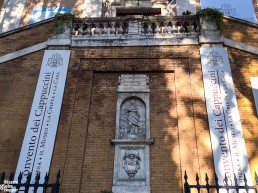
Pagan Gods Over St.Clemens Basilica
Even though not being a crypt nor a catacomb, this place held other interests. It’s a three-tiered complex of buildings. The oldest parts date back as far as being a home of an ancient, Roman nobleman, built on the foundations of a building that had probably been destroyed in the Great Fire of 64 AD. The other layers have just been built on top of the older ones, one after another. There are spots where you can see the old constructions through a glass floor.
Begin your exploration from the ground floor. There stands the most interesting part of this Basilica, the Mithraeum. It was a worshipping place for a mystery religion practiced in the Roman Empire from the 1st to the 4th century AD. The name origins from the Persian god Mithra adapted into Greek as Mithras and linked to some new, distinctive imagery in Rome. The Cult of Mithraism had a complex system of seven levels of initiation and the worshippers always met in underground caves like the one preserved below the Basilica St.Clemens. What happened to the Cult of Mithraism early in the 4th century AD has stayed a bit of a mystery. Descriptions are few from that period, and there is no evidence found that the cult would’ve still existed in the 5th century.
However, the Mithraeum is not the only remnant of Paganism in this Christian church. For example, there’s an altarpiece with some pagan symbolism carved on it, but if you turn it around, there are Christian ones on the other side. This was just economic re-usage of resources, not a clever way to distract, though. When ascending from the ground floor, you’ll move through the layers of time and see how the construction changes – and the pagan symbols turn into Christian ones. Unfortunately, the place loses interest at the same speed. There are some very remarkable frescos on the top floor, but having always been more interested in the ancient Paganism than the Christianity, I appreciated the origins more. Christians have destroyed too many places valuable for cultural history by building their sanctuaries on top of the original pagan ones. It always adds up to my depreciation.
The most interesting place of these three sites was the Catacomb of Priscilla. Special thanks also go to our guide, Joseph, whose way of telling detailed stories kept our interest alert. Even though we’re not the type of travelers who enjoy guided tours, it sometimes just pays the effort to take one. You can hear great details on the way, which you otherwise would miss.
Bizarre Fact
There's one fun legend told in Rome about the Cappucino coffee. It's said to be invented in a café right next to the church of the Capuchin monks. It was done for some foreigners who insisted on having milk in their coffee. The owner put some frothed milk on top of the coffee, which reminded him of the hair style of the Capuchin monks – a ring of hair on an otherwise bald head. Inspired by this, he decided to call the new coffee "Cappuccino." This story is probably not true, but it's nevertheless a fun story.
*Disclaimer: We were hosted by Walks of Italy on a walking tour of the Roman catacombs and crypts, but all opinions and views are entirely our own.
Sight Of The Week: The Irrawaddy Dolphins, Cambodia
These rare freshwater dolphins live in the stench of Mekong River just north from Kratie, Cambodia. They are the best sight to see if you ever find yourself in this little town in the Kratie Province. Though often misleadingly said to be river dolphins, they’re actually oceanic ones. They’ve just established subpopulations in fresh water rivers, like the Irrawaddy River, where they’ve got their name from.
The place to see the Irrawaddy dolphins is at Kampi. It’s located about 15 km north from Kratie, and you can take a moto to get there. From Kampi, you can take a tour of a traditional fisherman boat to get you out to the middle of the river. The best time to see them is in the early morning hours, late afternoon or early evening hours. There are just about 15-20 individuals left living on the Irrawaddy river. But fortunately, their numbers have slowly begun to increase, as have the education of the fishermen for the benefit of these rare species. The protection of the endangered Irrawaddy dolphin is crucial to the ecosystem and overall health of the Mekong River. They also support the economy and employment of communities involved with dolphin-watching ecotourism. The Irrawaddy dolphin is also regarded as a sacred animal by many Khmer and Lao people.
These curious animals don’t like to jump high out of the water like their oceanic counter ones. But they like to swim near the surface so you’ll have excellent opportunities to see them quite close. The guides will take you up the river, and when you spot them, they’ll stop the engine, and your boat will just float slowly closer to the animals. This is absolutely required for not to disturb the dolphins. They look somewhat adorable with their bulging forehead and black eyes.
We were in Kratie in 2012 and spent a great, lazy and hot afternoon viewing the dolphins from the little fisher boat. It took us awhile to spot the creatures, but eventually we spent hours just floating around their area, watching them swim, and even play around their natural habitat. Don’t miss this unique opportunity to enjoy the company of the Irrawaddy dolphins (trey pisaut in Khmer) when you’re in this area!
Sight Of The Week: Oku-no-in, Koyasan, Japan
Oku-no-in is a Buddhist/Shinto graveyard in Koyasan, near Mount Koya in Japan. Oku-no-in is considered to be the holiest place in Koyasan. In the middle of a thick forest of cedar trees its over 200 000 tombstones, hundreds of years old, stand covered in moss and vegetation creating an atmosphere of eerie ghost stories.
Go for a nighttime walk when all the old, Japanese stone lanterns are glowing their shimmer light in the darkness and you can’t but keep looking over your shoulder, as if something else was there, following you. Tombstones lay on top of each other, crooked, half collapsed. The darkness of the forest embraces the graveyard and it feels like you’ve just stepped through a time portal and are walking in the ancient, feudal Japan. Wander off the main corridor, to the narrow paths zigzagging deeper into the woods and you’ll feel like you won’t find your way back again.
Go during the day and the atmosphere is entirely different. Though the mysterious vibe in the air is still there. Besides a place to feel – and maybe see – ghosts, (as if they are not here, I can’t imagine where they’d be) Oku-no-in is a sacred place to Buddhists and a place for worship.
A famous Buddhist monk, Kobo Daishi is buried in Oku-no-in, and his mausoleum is considered to be one of the most sacred places in Japan. Walk the stone pathways towards the mausoleum and on the way be mesmerized of the hundreds of lanterns of the Todoro (Hall of Lamps), burning in the night. Two lanterns at the back of the Hall are said to have remained lit for nearly thousand years: the lamp of Kishin (”the single lamp of a poor woman”) and the lamp donated by Emperor Daigo. All in all, the sight is dazzling. Like an island of light in the middle of the ocean of pitch black darkness.
Kobo Daishi (Kūkai) was a monk who lived between 774-835 and instead of being actually dead, he is believed to be in eternal meditation – a state that according to the Buddhist tradition can be accomplished only by the holiest of the monks. Even today, the monks living in Koyasan treat him as if he were alive. Pilgrims come to Oku-no-in to worship his uncorrupted body as to ask for salvation, which they’re said to get.
Is it the atmosphere created by the several monasteries of Koyasan, the eerie graveyard itself with the undead monk or the fact that this is a sacred place to so many people, the conclusion is that there’s definitely something magical in Oku-no-in (奥之院).
Riding On The Famous Bamboo Train of Battambang
A short stretch of mostly overgrown railway, a remnant from the colonial past, still exists on the outskirts of Battambang, Cambodia. Climb on a makeshift trolley, hang on, and go for a ride on the famous bamboo train.
Even today Cambodia still hasn’t got a properly working railway system. The French colonial settlers built a network of 612 kilometers, but the Khmer Rouge regime shut it down. Nowadays most of it lay abandoned and decayed. It’s rumored that there are government plans to revive the whole railway network, but it as been in the planning stage for years now. Time will tell whether it ever be accomplished. As of today, the project has only completed a railway from Phnom Penh to Sihanoukville.
Locals used the bamboo trains (or nori in Khmer) to transport goods and people to other villages during the civil war when they were a cheap and even an enough fast mode of transportation. Initially, the nori was propelled by hand, but nowadays they have either a tractor or a motorcycle engine attached.
Ride On The Bamboo Train
If you wonder what to do in Battambang, riding the bamboo train is one of the top picks. The bamboo train lays on the outskirts of Battambang, and you have to get a tuk-tuk or a scooter to get there. Your driver will wait for you at the starting – and ending – point. Remember that today the bamboo train runs mostly for the fun of the tourists. It just runs the relatively short way to a nearby village and back.
The bamboo train is actually owned by one man, and all the drivers are working for him. You pay your fee of 8 USD/person and off you’ll go. You’re seated on bamboo slats and a carpet laid on a metal frame, and your driver sits at the back of the engine. Once we had embarked on our journey, the trolley quickly accelerated into a considerable speed, and the green bushes and the lush Cambodian countryside started to flash before our eyes.
The bamboo train can achieve speeds up to 40-50 km/h, so hang on tight! We were happy to have our own trolley, but it soon dawned that it wasn’t always an advantage. Since the track is only one-way, you’ll probably encounter trolleys coming to the opposite direction. When that happens, the one with the fewer passengers on board gives way to the other. We had to give way more than once. When this occurs, you have to get off, and the drivers will disassemble the trolley by hand, one piece at a time, and assemble it again behind the other trolley. Once it’s done, you hop back on board and continue your journey.
The tracks have certainly seen better days and seem like they’ve decayed long ago. Vast holes and planks are missing under the tracks, especially on the bridges, and you can see straight down. If you get easily scared, don’t look. It had started to rain already when we left, but that didn’t bother us so much in the thrill of the speed. The rain did make the already poor conditioned tracks more slippery, though.
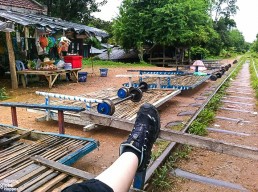
The Village at the End of the Line
When the nori reaches the little village at the turning point, it’ll have a mandatory stop for a time that can vary from 15 minutes to even half an hour. Our driver went for lunch to a nearby shop, and we wandered around the stop for a few moments. There were many, little shops selling warm sodas, beer, and scarfs at the stopping station.
Fairly quickly we were approached by a local suggesting that we should buy something. We are hard to persuade but agreed to have a look. After awhile we ended up buying two cans of beer while waiting for our ride back and for our driver to finish his lunch. Kids and few adults swarmed around us from time to time, trying to sell different things, which made us feel a bit uncomfortable. Luckily a bunch of village boys were goofing around in the mud and entertained us by posing for our camera.
Finally, our driver arrived, assembled our nori and our journey back began. When we were leaving, a local, older woman said to us – many times – that we should tip our driver. We got an impression that all the fees go to the owner of the bamboo train, and the drivers are paid only little amounts, so the tips were a big part of their income.
It was no surprise, but all this ”over pushing” made us feel oppressed and we weren’t so excited about the tipping demand. It should be voluntary, after all. However, when we arrived back to our starting point, we decided to give the driver a few extra dollars.
All in all, the experience was fun, and this was one of the reasons why we had come to Battambang in the first place. But riding the bamboo train would have been a much more pleasant experience without the locals being so plying. It always makes a general feeling quite intimidating.
Nevertheless, if you still want to have a glimpse of how traveling was like in the old days, stop by in Battambang. If the Cambodian government’s plans for rebuilding the railways come true, the bamboo train of Battambang will be gone. But for now, there’s still a chance to go.
Have you done this? Tell us, we’d love to know how was your experience on the Bamboo train of Battambang!
*NOTE: Sorry for the bad quality of the pics, they’ve been taken with on old iPhone 4, that being the only camera which we had with us there.
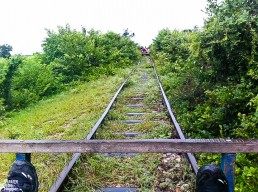
Meeting the Indigenous People of Nicaragua – the Rama
The Rama are said to be the Guardians of the Forest. These indigenous people of Nicaragua live in one of the most remote corners of the country, in the Reserva Biológica Indio Maíz. This beautiful, untouched land and its interesting people are hard to reach, but the journey will be worth the effort.
There are few Native Indians left in the world, who are still living in their ancestral environment and who try to protect their lands as powerfully as the Rama. So strong is the love of the Rama for their native rainforests that without a second thought they can reject millions of dollars and big, multinational corporates as well as international scientists. All without a blink of an eye, if they think the people would hurt their lifestyle or the surroundings. In the ideology of the Rama the rainforests are not made for humans to only benefit from – instead, we should live in the forests, in harmony.
The Communities and the life of the Rama
Today about 50 families are living in the area of Greytown and Rio Indio in the Indio Maíz. Canta Gallo is a relatively new settlement concentration. It can be reached by a small motor boat in approximately 8 hours from San Juan de Nicaragua/Greytown. It’s so deep in the jungle that no cell phone will work since the last mobile network tower is located in San Juan de Nicaragua. You will be completely disconnected.
Moreover, the biggest Rama community is in Bluefields, where’s also located the world’s only Rama University. There was also Makenge – a town, which used to be the biggest Rama habitat center in Indio Maíz. Our guide, Salomon, was originally from Makenge, too. Until the early 21st century there was also a first-grade school in Makenge for the children of the Rama, but the Nicaraguan government shut it down.
This brought many problems to the Rama community. Since then the parents have been struggling to get at least some education for their children because it’s very expensive to send children to school a long way away and the Rama are generally penniless. The government pays petite attention to the Rama issues, although nowadays the situation may have improved a bit. But still a new school hasn’t been built, for example.
After the school had been suppressed, Makenge started to die. Until 2003 there were still 5-10 families living in Makenge, our guide Salomon being one of them. But eventually, they all moved to Greytown/San Juan de Nicaragua, because it was too expensive to live so aloof. However, some Rama has always lived in the Indio Maíz, scattered around, and they have just refused to move into the town.
Life really isn’t easy in the jungle – many of the Rama still use the traditional canoe, carved out from a single log of a tree. With such canoe, it takes 12 hours to paddle from the area of the old Makenge to Greytown via the Rio Indio. This is a long journey to take every time they’ll need some food and other equipment from Greytown, and many of the people live much further away than Makenge. We actually saw few of these canoes making the journey while we were visiting in the Indio Maíz and you couldn’t but admire the people. Not only for their exceptional persistence, but also for their determination for preserving their unique culture.
In addition to the community in Canta Gallo, the Rama have also started to build a new settlement called the “Holy Land.” This little village is presumably in the same area where the old Makenge was, even though the actual location of Makenge was left a bit undefined in our guide’s stories. There’s a small concentration of families living around, and they’ve even built a new Communal House. So maybe that community area is slowly starting to thrive again. A good sign for the revival of the Rama habitat in Indio Maíz.
Life really isn’t easy in the jungle – many of the Rama still use the traditional canoe, carved out from a single log of a tree. It takes 12 hours to paddle from the area of the old Makenge to Greytown.
Life of Tradition of the Rama
The tradition lives firmly among these indigenous people. For example, most of the Rama live in traditional houses, built from wood and other materials got solely from the forest. The houses are also very primitive, consisting of just the essential parts. There’s an open communal area with hammocks, a covered sleeping area, and an open kitchen. Below the floor is where the animals are kept – mostly chickens. The only toilet is the nature behind the house, and if you want to shower – well, there is the river. But you have to be very careful because there are crocodiles in the river!
Some modern things the Rama have adopted, though. They have solar panels to produce the little electricity they need for the lights and maybe for a radio or a TV. Even though they don’t have much, these people were some of the most friendly I’ve ever met. It was an honor to have the privilege to spend a night in an original Rama house. Sleeping in the hammock on the open porch, in the middle of the jungle, was an experience you just cannot forget. Pitch black darkness of the night and all the sounds of the vast jungle around you. It was a bit scary, but soothing at the same time.
As mentioned before, the Rama are “the Guardians of the Forest” and they know a great deal about the rainforest. Even today, Shamanism has a lot of footing in the Rama communities. When it’s at least a half day’s journey to the nearest doctor, sometimes the knowledge of which plant may save you – or at least give you some first aid – may turn out to be invaluable.
Salomon showed us a mushroom, which can ease snakebites, as an example. We asked him that if something severe happens, like a crocodile bites you, do you have a chance to survive? He was quiet for a while, then looked at us with a troubled face and said: “If you are lucky.”
The jungle hides many other things besides dangers and medicinal plants. We visited the sacred Rama pyramids of Canta Gallo, and they’re not the only secrets of the Indio Maíz. Many stories are told about the spirits of the jungle, who protect certain areas.
Commonly known is a story of one army group who were supposed to clear off a part of the jungle for a government project, but ended up shooting each others to death when trying to evict the attacking jungle spirits who protected their forest.
“There are areas where only the Rama can enter,” our other guide to the pyramids, Margarito, told us. These areas are a significant part of their culture, and maybe they are guarded not only by the Rama but the fierce jungle spirits as well.
The Dying Rama Language
The original Rama language has almost died away. Only 1% of the Rama can speak it. Some say that there are only 24 elderly people left who can speak it fluently. It’s a verdict of disappearance, despite some recent language revitalization efforts in the last few years. Even our Rama guide Salomon admitted that he couldn’t have a fluent conversation in Rama anymore, despite him being a bit elderly already. A language is a big part of cultural identity, and therefore, I wish that despite all the odds, they would succeed in preserving the Rama language – a part of the Chibchan languages. Maybe this Rama language project will help, at least a bit.
Nowadays most of the Rama speak “Rama Cay Creole,” a strange English mixed with some words of Spanish and Rama into it. It sounds peculiar, and your ears have to get used to it first, but since it’s mostly English based, you can get along just fine.
We asked our guide, Salomon, that if something really serious happens deep in the jungle, like a crocodile bites you, do you have a chance to survive? He was quiet for a while, then looked at us with a troubled face and said: “If you are lucky”.
How to Arrange a Visit to the Indio Maíz and the Rama Indians?
The best option to organize a visit to the dense jungles of Indio Maíz and to meet the Rama is when you’re already in San Juan de Nicaragua. We couldn’t find any websites from where you could book a tour beforehand, at least not any reliable or convincing ones. I also strongly recommend booking your visit from San Juan de Nicaragua/Greytown for a reason.
There were lots of companies offering an Indio Maíz tour in El Castillo, but if you want to have a genuine, authentic and truly individual experience, along with supporting the Rama community directly without any intermediates, you shouldn’t book your tour from El Castillo. Also, the journey to the heartlands of Indio Maíz from El Castillo is really long, to the extent that it can be quite exhausting. Make the effort, travel all the way along the Rio San Juan to Greytown/San Juan de Nicaragua. Trust me; it will be worth it!
When in Greytown, ask for your accommodation to arrange you a tour to Indio Maíz or ask around the village for Rama guides. If you speak at least a little bit of Spanish, it’ll help you a long way. Note that only Rama Indians are allowed to take visitors into the Indio Maíz! Our Hospedaje arranged us to meet our guide; the Rama Indian called Salomon, with whom we visited the Reserva Biológica Indio Maíz. We spent a homestay with a true Rama family and had a hiking tour to see some thousands of years old pyramids, deep in the jungle.
We had a one night’s trip, including everything (the tour, transportation, guides, accommodation, food, some drinking water). We paid 200$ for the two of us. The price can vary between 200-400$ (for 2 persons) depending on how many nights you’ll be staying and with what kind of boat you’ll be traveling.
Gas is expensive in Nicaragua, and you’ll have at least 6-8 hours’ boat ride into the jungle Reserve, so there actually won’t be much profit left for your guide(s) and the Rama community. Just in case if you think that the tour is expensive – it’s not! Salomon was a great and professional guide. I can warmly recommend to take him as your guide if you’re able to. He can take you further into the jungle than the other well-known guide, Alicia McRea, who usually makes her tours only as far as the old Makenge. And somehow, after meeting Alicia in person, I also believe that Salomon and his son, Norvin, will give you a more thoroughly, deeper and personal experience of the magical Reserva Biológia Indio Maíz.
(text: Piritta / photos: Niina / photo edits: Piritta)
The Christmas Market of Tallinn's Old Town
Feel the spirit of the Middle Ages at the Rathaus Square in Tallinn, when it’s filled with the tiny cottages selling everything from handicrafts to mulled vine.
The tradition of the Christmas market started already in 1441 when the Guild of Blackheads put up the first Christmas tree in the middle of the Rathaus Square. This square has been the heart of the Hanseatic town of Tallinn since the turn of the 13th and 14h century. Today it continues to be the lively center of the Old Town, still holding a high medieval atmosphere around it.
Different Guilds were the foundation of the Hanseanic city of Tallinn back in the Middle Ages. The Guilds of Traders ruled the city and the Guilds of Artisans were the other, very significant group in town. Together they made Tallinn a prosperous and famous place. The legacy of the artisans can be seen in the generous supply of handicrafts offered at the Christmas market. You have a wide selection from hand-made hats to wrought iron items and peculiar meat products to taste – like wild boar and beaver.
You can spend hours just strolling around the cottages, absorbing the atmosphere and sipping an occasional mug of mulled wine, if you feel cold. There are also many cafés and restaurants around the Square if you’d like to pop in for a cup of coffee or a quick snack. But if you want a real, whole meal, venture further away from the Rathaus Square. There are some very decent priced restaurants, like Spot or Rataskaevu 16, with great quality food.
I dare say that the Christmas market of the Old Town of Tallinn is among the best ones of Europe. Maybe it’s the atmosphere and its Middle Aged surroundings, but nevertheless, this is a market you shouldn’t miss! It’s open from late November until the 10th of January, so you’ll have plenty of time for a visit.
Don’t forget to end your stroll to the medieval bar of Draakon at the edge of the Rathaus Square and have a pint of beer from the traditional clay cups.
Great Gift Guide for Adventure Travelers
The biggest festive time of the year is just around the corner, and you may be wondering what to buy as a gift for your friend or family, who loves adventure traveling. I know it’s a hard one to figure out. We’ve put together a list of some of our favorite practical items. An adventurer will love these. You don’t have to wonder anymore, pick almost any one of these and you can’t go wrong!
(Just click on the images to get more info)
Aqua Quest Waterproof Backpack/Daypack w/straps
This 10L Dry-Pack will keep your gear dry when you hike in the rainforests or mountains, and the weather can surprise you. Conveniently sized, holds your DSLR and some additional gear for your day trip. The straps that make this a backpack are very handy. Essential gear for any outdoor adventurer!
Bestek Universal Camera Liner Insert
If you don’t like to carry around a traditional camera bag, like me, you’ll want a camera insert which you can put into your backpack to keep your DSLR (and additional lenses) safely in order. I’ve used an Osprey Flare 24 backpack on my travels for some time now, and this fits in it just perfectly. It’s also shockproof as well as waterproof, so it also helps to keep your gear dry.
PacSafe Theftproof Wallet and Antitheft Camera Strap
Now these are products that I love! I’ve had them for awhile already, and I trust them 100%. The attaching chain of the wallet is made from a material that you cannot break – not even with proper cutters! It also has a turn-and-lock security lock, which is hard to open. Attach this wallet to your backpack etc. and you can be sure no pickpocket can steal it from you! It has many pockets, also two zippered ones, so there’s plenty of room for your cash, coins and cards.
This strap is a great, little piece of gear – a slashproof camera strap. It has the same kind of turn-and-lock security locks, like the wallet. A stainless steel wire is integrated into the adjustable straps. They’re invisible to the eye, but that’s the secret why it’s slashproof. Excellent additional safety for your camera.
AeroPress Portable Coffee Maker
When you’ve made coffee with this, you’ll never again want to drink coffee made any other way! It just simply makes the best coffee in the world. It’s the “high-tech” of coffee making, though very simple and light to carry around with you. If you’re a bit of a coffee-snob like me, you’ll love it.
Buff headwear (regular or polar)
Buff is one of the most versatile pieces of clothing you can take on the road. It’s a scarf, a headwrap, a face cover, and from the polar version, you can even make a beanie. I like the skulls, but there are endless designs to choose.
Microfiber Travel Towel
ECOdept travel towel takes tiny space from your backpack, dries quickly, is antibacterial and is a breeze to use. Just essential.
Was this a useful guide? Any items what you’d have added into it? Tell us!
(*There are affiliate links in this post. If you choose to use them for your Christmas/New Year’s shopping, you’ll support us and this blog. Big thanks!)
Good, Old Wild West Cowboy Riding in Nicaragua
Do you yearn for thrilling cowboy riding in lush sceneries with good horses, accompanied with some home-made ranch food and chilling by the pool? If the answer is “yes”, there is a place for you in Southwest Nicaragua.
Located near the famous surf town of Nicaragua, San Juan del Sur, Rancho Chilamate is wonderfully tranquil compared to the backpacker and surfer hustle of the city, even though it’s just about 20 minute’s drive away. This truly eco-friendly ranch has some spirit of the “old days’ Wild West” and they have beautiful horses to ride with.
Riding Tours to Remember
Rancho Chilamate is primarily a horse ranch providing a different kind of riding tours in the beautiful, rural landscapes surrounding it. We chose to take the Sunset tour, their most popular one. It takes you through a mellow Nicaraguan countryside to the seashore, where you can taste the thrill of the speed, and gallop into the sunset. The beach seems like specially made for this purpose only, and it doesn’t matter whether you are an experienced rider or a beginner ‑ you’ll have a blast!
The ranch has fourteen healthy horses, and they’re good at matching you with the right horse, depending on your riding skills. We have several years of riding experience (including competing in show jumping and eventing/cross-country riding) so we can be pretty demanding when it comes to horses, but we were euphoric with the horses we rode!
The Experience of The Sunset Tour
Our tour began with dressing up in cowboy style. Since we had our own leather stetsons, we just needed to add the scarfs and the boots. Every riding tour includes a short photo session done by the owner and a professional photographer, Blue. So next up in the program was posing for some pictures and it sure was fun! Here are a couple of shots from our session.
After the photo shootings, it’s off to the saddle. Your guides will help you if you need any assistance. The horses are already saddled up, but if you’d like to do that by yourself I think it’ll be possible – just ask. We took some contact to our horses and got to know them a bit while we were waiting for everyone to be ready. You have to create a kind of a bond with the horse you’re riding, so you’ll know how to work with it. The Central American way of riding, “vaquero style”, differs a lot from the English style we have learned. The horses are trained very differently. It takes a bit of time to get the hang of it if it’s the first time you ride a horse in Central America. But don’t worry – it’s pretty easy!
We had people with different riding experience in our group, but despite the varying levels, our guides managed the group very well. The journey through the countryside was very relaxing, and because it was mostly walking with the horses, you could fully take in the scenery and enjoy. Even the rain didn’t lower our spirits. We just grabbed our Western style, long raincoats (which also cover half of the horse’s back) and put them on. After about an hour, we reached the beach. But before the best part of the tour – the galloping at the beach – we enjoyed a short rest accompanied with a warming shot of genuine Nicaraguan rum. And when we got back on our horses the rain had already stopped.
The beach provided a perfect background for the great photographs taken from all of us when we were galloping at the seashore. The owner Blue takes pictures from the riders in action, and she did a great job. There are only a few things that make me feel freer than galloping on an empty beach. It’s a feeling you cannot explain – you have to experience it yourself.
The darkness descended on the way back to the ranch, and the last third of the journey we traveled in total darkness. I mean in the darkness where you literally can’t see what’s in front of your eyes anymore. But that just added to the experience – the occasional house along the road with a distant, lonely light and the fireflies playing around, between the trees. It was a peaceful and great ending to a vivacious day. You don’t have to worry, either. The horses know their way home, even in the pitch black dark.
Other riders were given a lift back to town, but we were happy just to go into our room and have a hot shower. Afterwards, you can grab a beer, sip it in a rocking chair on the porch and just listen to the night, while waiting for the lavish ranch dinner.
Spirit of the West With a Responsible Touch
Rancho Chilamate has four very comfy rooms available to stay overnight, with a maximum stay of 3 nights. The house’s interior looks like it’d be straight from some old Western movie. This place is also genuinely eco-friendly. Electricity is purely from solar power; they have their own, organic vegetable garden and the ranch is built with entirely local resources – from the construction materials to the building workers. They are supporting their local community fund and participating in a different kind of beneficial work.
They have helped in having medical supplies and treatment for sick animals and educating local people of animal healthcare. They also have an annual “Christmas Bucket” program, giving practical presents to the local rural community. These are just some of the things funded for example by the profits from the photographs. If the riders buy their high-resolution files, they will also support the community fund. I respect this kind of mentality of giving something back and especially appreciate their efforts towards animals’ well-being. I think it’s important to support sustainable tourism and responsible places over the ones that are not.
In this laid-back, but the classy atmosphere you can really “let go” and concentrate only into relaxation, while adding in some brisk riding with great horses. It’s a compilation hard to beat.
Check the more detailed info from Rancho Chilamate from our previous post about the best boutique hotels of Nicaragua.
*Disclaimer: We were provided a one night’s stay and one horse ride by Rancho Chilamate, but all the opinions and views presented here are entirely our own.
*All the photographs of us are taken by Blue, Out of the Blue Photography.
Ultimate 10-Day Iceland Winter Itinerary – The Epic Iceland Road Trip
Are you thinking about making an Iceland road trip in winter? Visiting Iceland in winter is a journey you have to plan carefully. Driving the Iceland Ring Road in winter requires even more thoroughly planning since there are more things you have to take into consideration. But here is a complete Iceland winter itinerary for you.
This Iceland Ring Road itinerary is the same schedule we did at the Christmas and New Year’s time. When you have only 10-11 days to spend, you’ll have to choose what you want to see.
This Iceland itinerary skips the Westfjords, which are unreachable most of the time during winter, but includes all the most famous sights in the South and many exciting places in the East and North.
You can also modify this Iceland self-drive itinerary to fit your personal needs and preferences and skip or add destinations to your liking. But this is an excellent core for you.
Essential Things You Should Not Forget When Planning a Trip to Iceland
Your best friend while visiting Iceland in winter road trip will be the Icelandic Road Administrations website with its real-time updates about the road conditions.
Do yourself a favor and rent nothing less than a 4×4 car and never underestimate any of the warnings! If the road ahead is marked red, it means the road is impassable. It’s also possible that it’s closed. Don’t ever risk your life by trying to drive those roads despite the warnings!
If the road is marked red, your only option is to wait for the conditions to get better. The Icelandic Road Administration keeps excellent care of the roads and even if the road is marked red the night before you’d have to travel on it, don’t despair. In the next morning, it’ll probably be passable again. This is what happened to us, more than once.
The Ultimate Winter Iceland Ring Road Itinerary
Day 1: Reykjavik
Spend a day (or two) in Reykjavik, because this little, Northern capital offers excellent restaurants, shops, and bars to hang around in. Some of our favorite restaurants were the Grillmarkadurinn and the Lebowski Bar. People are amicable, and the town’s general atmosphere is cozy. You will also get used to the harsh winds you’ll be getting a lot when you hit the road.
Day 2: The Golden Circle
Leave early for the road and go to see all the famous sights in the “Golden Circle” – Geysir, Strókkur, and the Gullfoss waterfall.
The latter is magnificent when it’s frozen, and it’s also one of the Icelandic locations where they’ve filmed the famous HBO series, “Game of Thrones.”
Spend the night somewhere before the town of Vik, if you’re not able to drive that far. We overnighted in Eyvindarhólar in a little hotel which reminded me of “the Great Northern Hotel” in the legendary “Twin Peaks.”
Iceland Winter Itinerary – Southern Iceland
Days 3-4: The Black Sand Beach, Svínafellsjökull, and Jökulsárlón Glacier Lagoon
Drive to the Southernmost village of Iceland, Vik, to see the famous black sand beach and take those legendary, haunting photos of the Raynarsdjangar (the Troll Fingers).
Continue to the Skaftafell National Park and go for a glacier walk to Svínafellsjökull, which is an outlet glacier of the mighty Vatnajökull.
You can’t visit Iceland and not to go for a glacier walk! It’s an experience you’ll remember for a long time. You will get a guide who will take you to an unforgettable stroll along the blue ice that stretches as long as your eyes can see. Put on your crampons and walk into the blue! A guide is mandatory because they know the glacier and its treacherous crevasses that can be miles deep.
After your glacier adventure, drive to Hali to spend the night(s).
In the next morning drive the short way from Hali to visit the Jökulsárlon glacier lagoon. If possible, you can go for a zodiac boat ride into the lagoon.
During the winter the zodiac boat rides are not always possible, it’s utterly dependable of the ice situation. But you can get gorgeous and surreal pictures from the shore, too! Below are some photographs that we took.
Day 5: Seydisfjördur
Drive all the way up the Eastern side of Iceland to the small town of Seydisfjördur.
It’s a little fisherman town in the lap of a beautiful fjord. If you have the time, you can visit some interesting sights on the way, but take note of the weather conditions. It is about 8 hrs drive (without many stops on the way).
Driving in Iceland in winter can be tiring, lonely and you must stay alert all the time! The wheater can change in an instant, and when the snowstorm arises, the visibility can vary drastically from good to zero. So, be prepared and don’t drive if you’re too tired.
Any Iceland winter itinerary should be made as rational as possible – don’t try to make speed records, rather go at your own pace no matter how much time it’ll take.
Day 6: Myvatn
Drive to Myvatn and on the way stop by for a swim in the best thermal baths of Iceland, the Myvatn Nature Baths. Spend the night somewhere in the region of Myvatn.
The Myvatn Nature Baths are not so crowded as is the famous Blue Lagoon, which makes it a much better option to experience Iceland’s awesome thermal baths!
And when you are in Iceland in December, it’s a magnificent experience to go for a swim to the warm, mineral-rich lagoons while you’re surrounded by pure, white snow. It feels surreal.
Day 7: Dimmuborgir, the “Black Fortress”
Leave early to hit the road again and visit the strange volcanic rock formations, the Dimmuborgir or the “Black Fortress”. It may be harder to wander around in winter when there are loads of snow, but if you’re determined enough, it’s totally possible to hike even the longest route around it. Just be prepared to wade in thigh-high snow and reserve enough time!
Also, don’t go without a GPS device (your phone with a reliable GPS app will do as there should be a good signal most of the times), even though there are good route markers and signs.
The route markers can be buried in snow like they were when we hiked all around it – without snowshoes. I also recommend renting snowshoes, though. They’ll make the hike a lot easier.
We didn’t have snowshoes and it was a bit gruesome hike in the thigh-high snow, but we still enjoyed it and it was a true adventure since we were completely alone in the Dimmuborgir most of the time. It felt like the barriers of the worlds would have been thinner in this place.
Other good sights around Myvatn are Hverfjall and a cave called Grjótagjá – both filming locations of the HBO series “Game Of Thrones.”
After visiting these other-worldly places, drive to Akureyri in Northern Iceland. If you have time, you can visit the waterfall of Godafoss on the way.
This is how it looks like through the windscreen when you’re driving in Iceland in winter amidst a snowstorm. Visibility is just a few meters and the roads are slippery. So drive carefully! The fun starts around 1:00 on this video. Check it out!
Iceland Ring Road Itinerary – Northern Iceland
Day 8: Akureyri
Have a rest and wander around the biggest town in Northern Iceland, Akureyri. This Northern hub of Iceland has some great restaurants, or nearby are some great sights you can go to see. One good restaurant would be Rub 23.
If the time is right, one of the most popular excursions is to go whale watching to Dalvik, Hauganes or Húsavik.
Day 9: Borgarnes
It’s going to be a long driving day from Akureyri in the North to Borgarnes. You will drive all the way down the Western side as far as you can. We stayed the night near Borgarnes, and in the evening we saw some fabulous Aurora Borealis (Northern Lights) in the clear night skies.
Day 10: Back to Reykjavik
Drive back to Reykjavik to catch your flight home. Or stay one or two extra nights and celebrate your “impossible” task completed – you drove around Iceland in just 10 days, in winter.
Where to Stay in Iceland?
I’ve dropped a few good accommodations’ names to this post. These are places we stayed during our own Iceland road trip.
But of course, searching TripAdvisor is always a good idea when you’re planning a trip to Iceland.
With this Iceland itinerary 10 days, we aim to provide you an example of a successful road trip itinerary for driving around the famous Ring Road.
Please, do take into consideration that driving in Iceland in winter is always unpredictable and anything can happen. So, reserve yourself enough “buffer-time,” if things go South at some point. Remember that in a worst-case scenario you may have to wait for the roads to open again for a few days.
And always make safety your priority!
Have you completed an Iceland winter itinerary? How was your Ring Road tour in Iceland and how was your Ring Road itinerary? Let us know in the comments!
Pin This Story!
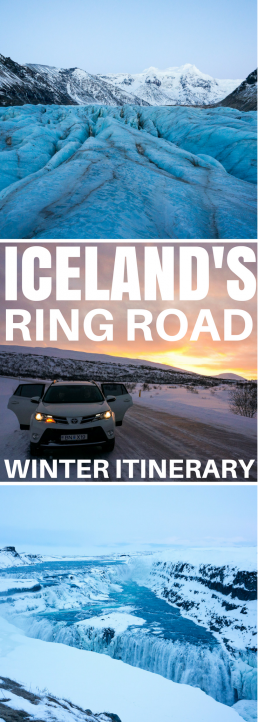
Visiting a Wildlife Rescue Center in Costa Rica
There are many wildlife rescue centers in Costa Rica and choosing which to visit isn’t always easy. If you want to pick a place that treats the animals in an ethical, respecting way and doesn’t do it for the profit, the choice becomes even harder.
There are literally hundreds of wildlife rescue centers in Costa Rica. In a land with such a rich biodiversity and a range of animals they actually become essential. Unfortunately, all of them don’t do the work without trying to profit from the animals, and they’re really missing the point. A wildlife rescue is about helping the animals, not trying to make money out of them.
Why Visiting a Smaller Wildlife Rescue Center Is Better Than a Big, Commercial one?
Sometimes the story goes that the more paying visitors are coming in, the more greedy places might become. On many occasions, the rescue centers with relatively small entrance fees come across as better places. Then you may rely more on the fact that your money actually goes straight to the animals’ benefit for 100%. Most of the times the best places are also almost entirely voluntary based.
In small centers, the staff has enough time to take care each of the animals the best way possible. They can consider them as individuals. Most important of all, their primary purpose is always to treat the animal back into such a health that it can be released back into the wild, as soon as possible.
Big places, on the other hand, tend to be more like a circus. The animals have often been put into too small cages, as to have as many animals around as possible. Unfortunately, in many cases this just results that the animals are no longer taking cared of properly, the center’s employees not having enough time anymore. Also in the worst case scenarios, the animals aren’t even released back to the wild because the place may earn too much money from having them around. This is where it really gets twisted. Sometimes you can’t be sure anymore – is it a zoo or a rescue center?
You can also tell a lot of the place about how the animals seem to get on in their surroundings. Do they seem happy or do they seem depressed and anxious? Just observing the animals a bit more carefully will tell you a lot. You can see it from their behavior if they are not treated right.
Tree of Life Wildlife Rescue Center or The Sloth Sanctuary?
There is only one correct answer to this question: choose Tree of Life Wildlife Rescue Center!
Many of the reasons I told you above, apply here, to the benefit of the Tree of Life. I encourage doing a bit of searching around the web of your own, but some of the things you’ll likely find out about the Sloth Sanctuary may not be pretty. They may have once been a good rehabilitation place for injured sloths, but unfortunately, it doesn’t seem to be anymore. Quite pricey entrance fee (25 USD/person) doesn’t seem justified when many of the animals live in small cages without enough natural stimulus. We drove past the place, saw the small cages and it made us sad. Business should never run over the welfare of the animals.
Instead, in the Tree of Life Wildlife Sanctuary, the entrance fee is smaller (about 10 USD/person) and the place runs mostly by donation money. It’s a relatively small place, but there are a lot of different animals to see. Tree of Life doesn’t have a media circus around them, nor it is so massively visited. You can spend as much time over there as you like, without crowds around you. The animals have quite large cages decorated like their natural habitat and most of the times there will also be sloths. Most important of all – the animals seemed happy and not stressed.
However, there’s a section for animals who have just recently arrived at the rescue center and are still more sick. These animals’ behavior seemed a lot more distressed, despite their quite good captive conditions, but it’s entirely understandable. In general, the animals appeared to be taken care of really well and looked very active and quite happy.
Especially the two sloths that we met were extremely active ones. They were just about to be released back into the wild and were climbing all over their big cage, decorated with many branches for them to hang onto. They were very social and curious fellows as well. Both of them came to see us at close hand and posed willingly for our lenses.
Encounter New Species in Tree of Life Wildlife Sanctuary
We met an animal of which we didn’t have even heard of before. It was a small cat species called Jaguarundi. It looked like a dark brown jaguar, but like a mini version. It was quite flashy, too. Showed us its teeth and ran around its cage like attacking and running away at the same time.
We also saw many other animals for the first time at Tree of Life, like different kind of monkey species and a blind kinkajou, one of the few permanent residents of the rescue center. Their purpose is always to return the animals back into the wild and only in some rare cases that is impossible. Then they’ll stay at the rescue center. Impossible to release was the case of the kinkajou – being blind it wouldn’t have survived in the wild.
We ended up spending quite a long time at the rescue center, photographing and watching the animals. Walking around and enjoying its tranquil atmosphere. There were only a few other visitors besides us, and we got to explore the place almost solemnly.
Tree of Life left a great feeling in general because it seemed to be very well operated and their focus was where it should be – on the animals’ welfare. It’s located a short drive (or walk) away from the center of Cahuita.
Simply put, the Tree of Life Wildlife Rescue Center is the place to go, if you want to see a broad range of animals and at the same time support their rehabilitation and welfare in a responsible and sustainable way.
Little Facts and How to Get to Tree of Life Wildlife Sanctuary
Tree of Life is founded in 2008, and they have a volunteer program as well as a breeding program for turtles and iguanas, where they’ll reintroduce them into the wild and to their natural habitat.
In addition to all the animals, there’s a great botanical garden with many types of plants.
There are many ways to get to Cahuita from San José. Daily buses depart from the Terminal del Caribe and take about 3,5 hours. By car, it takes 3,5-4,5 hours, depending on the traffic. There are also vans and shuttles driving the route.
From Limón, you can take a one-hour bus ride, and they’re departing hourly from 5 AM to 6 PM from Radio Casino.
Don’t miss a visit to this great wildlife rescue center!
The Best Boutique Hotels in Nicaragua
A boutique hotel is still quite a new concept in Nicaragua. The bigger colonial cities, like Granada and León, have beautiful colonial villas turned into boutique style hotels or b&b’s, but that’s pretty much it. In remote areas, you will be very lucky to find even a decent accommodation. So it’s worth the splurge whenever you’ll stumble upon a charming boutique hotel in Nicaragua!
During four week tour in Nicaragua, we stayed in more than 15 hotels from which we selected the four absolute gems. Every one of these boutique hotels is certainly among the best hotels in Nicaragua. They offer a truly unique, Nicaraguan style boutique hotel experience with a high degree of personal service. Enjoy!
Montebrisa Boutique Hotel, Matagalpa
Inhale the bygone days of glory in this beautifully renovated Art Déco mansion. Montebrisa Boutique Hotel alone would serve as a sufficient excuse to visit Matagalpa, the official coffee capital of Nicaragua.
Montebrisa Boutique Hotel is located only three blocks from the cathedral and the central park (i.e. center of Matagalpa), but the garden makes it a soothing oasis with its own microclimate. The stunning villa of is surrounded by 300 coffee trees and 45 species of ornamental plants, some of which are near extinction. Guava, nispero, mango, cedar, a vast selection of colorful flowers – the garden of Montebrisa has it all. Fresh mountain air feels even cleaner here, and I bet that every bird and butterfly in town stops by daily to binge, chirp and play around you.
Montebrisa Boutique Hotel must’ve been the most luxurious place we stayed during our one month tour in Nicaragua. Still, it’s incredibly homey and very affordable by Western standards. Surroundings feel spanking new: the old Art Déco family house was totally renovated in 2011–2013. Everything is at the level of a five-star hotel from an ergonomic bed and luxurious linens to the courteous service. Our room had a private balcony with a beautiful view to the mountains of Apante Natural Reserve.
Montebrisa Boutique Hotel is a true haven for unwinding a day or two before your next adventure in the Northern Highlands of Nicaragua. Be sure to witness a sunset over the mountains, sitting in a rocking chair on the veranda, when the birds’ chirrup reaches its loudest point.
Room Tip: After touring all the rooms of Montebrisa Boutique Hotel, we still loved our Queen Balcony Room (100$), but you really can’t go wrong here. I would stay in the new annex, which offers more privacy and the best mountain views.
Rates: 90$–120$ + 17% taxes (including breakfast)
Xalli Ometepe Beach Hotel, Ometepe
Xalli Beach Hotel gives you an instant introduction to the fascinating key elements of Ometepe: the cloud covered volcano peaks, extensive lava sand beaches, and quiet rural idyll, where time stands still.
Xalli is a serene boutique hotel at a beautiful beachfront location away from the noisy towns of Moyogalpa and Altagracia, where you don’t want to stay. At Xalli Beach Hotel, you are still only a short bike or taxi ride away from the main attractions of Ometepe, like Ojo de Aqua (15 minutes by bike) or Maderas volcano (about half an hour by car). A few decent restaurants can be found just a kilometer away in Playa Santo Domingo. After a muddy hiking trip, it’s a real pleasure to take in the lake views from your own porch or their small lakeside restaurant.
Xalli Beach Hotel is pretty new (opened in 2013) and offers only 7 rooms with all the modern comforts. After roughing it a bit in Río San Juan (no decent lodges available), I was pleased with the extreme cleanliness of our tastily decorated room. Ten hours’ ferry trip from San Carlos made me seasick for over 24 hours. Thus, I praised our luxury king size bed (one of the best we had in Nicaragua) and the staff’s willingness to sooth my pain. Xalli has the most amazing freshly squeezed organic juices and their juniper juice literally brought me back.
You need to visit Ometepe to experience the rural side of Nicaragua. A separate post covering our quest for ancient petroglyphs is coming soon!
Room Tip: Deluxe Room #1 has the best lake views and shares a porch with deluxe room #2. If you appreciate privacy over views, pick Deluxe Room #3 with a private porch.
Rates: From 39,10$–67,15$ during low season and 47$–85$ during high season + 17% taxes (excluding breakfast).
Rancho Chilamate, horse ranch and boutique hotel near San Juan del Sur
Besides unforgettable horseback riding tours, this atmospheric horse ranch offers also very comfortable accommodation at all-inclusive prices. Rancho Chilamate has just 4 rooms – with a maximum stay of 3 nights – but if you don’t want to stay in the hustle and bustle of San Juan del Sur, this is the place to go. Three of the rooms are located around the inner yard pool, and there are many places to chill out around the house and estate. Meals are fulfilling ranch style caterings that won’t leave you hungry. The atmosphere of the ranch transports you in the middle of some old Wild West movie. The owner Blue and the hosts will make you feel welcome. As you’re staying on a horse ranch, don’t miss a riding tour! They have a wide selection of good horses, for beginners as well as for experienced riders. I’d recommend taking the sunset cowboy ride!
If you want to go to San Juan del Sur, you’ll need a car or a taxi, but this is a place for relaxing, so you probably won’t feel the urge to venture out. Rancho Chilamate is also eco-friendly: the hotel is entirely solar powered and helps the local communities with a part of their incomes. Staying at Rancho Chilamate is worth the money, even though being a bit pricey by Nicaraguan standards. Then again, this is not an average place, nor even an average boutique hotel, by any standard. The rates are all-inclusive, too.
Rates: from 110$–195$ (varying a bit according to the time of the year and your room). Rates are for per room (double occupancy, all-inclusive, taxes included). Reservations are mandatory, so book ahead. Check the current rates of Rancho Chilamate from booking.com »
Room Tip: Try to book some of the poolside rooms. The best one is “El Romantico”.
Flor de Sarta Boutique Hotel, León
Hotel Flor de Sarta truly is a little gem among the hotels of Nicaragua! It’s located very conveniently just a short walking distance away from the center of León, 500 meters from the historic cathedral and the town square.
Flor de Sarta is a pretty small boutique hotel with moderate prices and warm service. The breakfast is just superb with many things to choose from, accompanied with crépes and freshly made smoothies – the best breakfast we had during our travel in Nicaragua! Around the beautiful inner yard of this fully renovated, colonial style house, are tables where you can enjoy your coffee, looking at the lush, little garden. After a hot day in town be sure to dip in the lovely pool to refresh yourself!
The service, in general, is excellent. The French owner couple will do their best to make your visit in León as comfortable as possible. Just ask anything and they’ll make it happen. Very rarely have we confronted such an excellent service. The rooms have super comfortable orthopedic mattresses, which are great – especially if you have some back problems. Flor de Sarta is certainly worth the money, so my advice is to book well ahead to secure a room and get the best price-quality ratio in León!
Rates: From 39.60–85$ (including breakfast). Lock the best deal to Flor de Sarta from booking.com »
Room Tip: Try to get the “Deluxe Junior Suite”. It’s the most private and the only room on the 2nd floor. Deluxe Junior Suite has a huge, private terrace, as well.
If you have found your favorite boutique hotels in Nicaragua, please share the tips in the comments below!
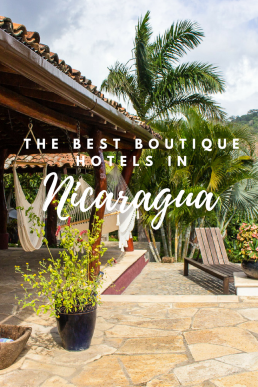
*Disclaimer: Some of the boutique hotels mentioned in this article hosted our stay, but all the opinions remain entirely our own. The article contains affiliate links to booking.com: if you choose to book your stay through them, you won’t pay any extra, but we receive a small commission to fuel our travels. We honestly think that these four boutique hotels are each among the best affordable boutique hotels in Nicaragua.
Panga Ride To Little Corn Island In Nicaragua
The panga ride from Big Corn Island to Little Corn Island can be a very bumpy ride and it will definitely be a wet one.
Be prepared to get soaking wet – literally! Some people say that the Corn Islands are some of the best Caribbean Islands, so getting to Little Corn Island is going to be worth it.
This is how it looks like to get soaking wet! Check it out! And if you like it and want more videos like this more are on our Youtube Channel!
Visiting A Cigar Factory In Estelí, Nicaragua
One of the world’s cigar capitals is a little town called Estelí, in the Northern Highlands of Nicaragua. Nicaraguan cigar factories spot this city where you can visit and buy some quality “tubes” to take home, too, if you like.
Estelí became a kind of refuge to Cuban cigar makers during the Cuban revolution in 1959. The people brought with them the knowledge of growing the tobacco and making the cigars, and nowadays Estelí produces top-rated Nicaraguan cigars that are some of the world’s best ones. Nicaraguan cigars are great rivals to the Cuban ones, and some people even say that they are the best in the world.
Getting to Estelí, Nicaragua
Unless you have a car, you have to take a bus to Estelí. There are quite good and frequent connections to Estelí from many cities, but of course, some of the coaches are Ruteados (aka chicken buses), and they are not particularly comfortable transportation mode.
We took a minibus from León, which took about 2,5 hours. Minibusses are practically minivans with 12-15 seats, so they are much more comfortable than Ruteados and usually faster, too.
Wondering about a great itinerary to Nicaragua which includes Estelí? Then look no further and check out our ultimate 4-week Nicaragua itinerary that includes all the highlights of this beautiful country!
And pick out some of the best hotels to stay on your tour around Nicaragua from here! Or you can check other accommodations from here.
Visiting a Cigar Factory in Nicaragua
Visiting a Nicaraguan cigar factory is one of the “must” things to do when you’re in Estelí. Even if you don’t smoke, the experience is exciting. On a cigar tour, you can see how the cigars are made, from picking the right leaves for particular cigars to packing them for export.
All of the cigars are handmade from start to finish, and you can’t but admire the craftsmanship of the workers who are rolling the cigars at maximum speed. Your guide will tell you detailed information about the cigars and the making process while you can watch a factory at work from close range.
We visited a smaller facility, which was near our accommodation and which produced “only” 5000 cigars/day. This factory was also one of the most traditional ones still left in the area of Estelí. There are also more significant Nicaraguan cigar factories, which produce as much as 10000-15000 cigars/day, but in these factories, the making processes are more industrialized.
The Price of a Cigar Factory Tour in Estelí, Nicaragua
The price of a Nicaraguan cigar tour varies. There are many places from where you can book a cigar tour, for example from the Treehuggers (a hostel and a tour organizer in town), but almost any hotel or a Bed & Breakfast can book you one. We paid 6 USD/pp and booked through our B&B Villa Riviera, which got us a private tour for just the two of us with an excellent Spanish speaking guide, called Darwin.
Getting A Cigar Tour in Estelí, Nicaragua
Besides booking a tour on the spot from the local providers and B&B’s, you can also book a tour to a Nicaraguan cigar factory from here. This will be convenient, especially if you are short on time. And you can pick up some cigar tour tips from here.
Making a Cigar Is an Art Form in Itself
Only the darker tobacco leaves grow in Nicaragua. The stronger tasting cigars are made of these particular leaves. The milder tasting cigar leaves grow, for example, in Ecuador.
The lighter leaves cannot be grown in Nicaragua because the climate is too cold. The real taste of a cigar depends on the climate in which the leaves are raised, and the leaves also differ in their thickness, color, and smell.
So, there are many different choices of combinations to make different shaped, sized, and tasting cigars. Even if you’re not an expert, you can smell the difference between the different leaves your guide will give you to try out.
In the Nicaraguan cigar factories, the cigars have their name after their shape. Like one shaped like a rocket is called “torpedo.” The GGI cigar factory where we visited makes many different kinds of cigars. A significant portion of their production goes to export, primarily to Connecticut, United States. They also have an exclusive patent for one particularly unique shaped cigar, meaning no other factory can produce the same shaped cigar.
The Making Process of Genuine Nicaraguan Cigars
The employees work in female/male teams of two. The man makes the first phase, and the woman does the finalizing. From the picture on the left below you can guess why.
Then the cigars are put into the pressing mold. In the next phase, there is a real professional who rolls some more leaves into them (check the video from rolling Nicaraguan cigars here or from below ) and makes the final, delicate cuts.
The employees have strict rules during working hours. They’re not even allowed to talk to each other. There was a sign on the wall which said that talking is allowed only on breakfast and lunchtime. Also though they’re not allowed to talk, they are authorized to smoke some cigars when working. The working hours are from 7 am to 5.30 pm. All workers have a target amount of cigars made in a day. If you don’t meet that goal, I believe you’ll quickly be out of a job.
So, in Nicaragua, cigars factories have a pretty strict discipline but the end products are of perfect quality.
All the finished products are then stored in cooling rooms for three months before they are sold, hand packed, and exported out of the factory. In the cooling chambers, there was every shaped, sized, colored, and tasting cigar you could imagine – shelves after shelves. Those rooms would have been a paradise for any cigar enthusiast, for sure.
Buying Smokable Souvenirs From a Cigar Factory in Nicaragua
From many of the Nicaraguan cigar factories, you can also buy cigars to take home. From the GGI cigar factory where we visited, you could buy any amount you wanted. You can even buy just one piece of every different cigar you want, no need to purchase large packages. Having this option is very convenient because it’s possible to buy many different kinds of cigars for tasting.
You can read more from our buyer’s guide to Nicaraguan cigar factory!
The best thing is that the prices are meager compared to what they’re even in the local shops. When you buy directly from the factory, the average price is usually 1 USD/cigar, or 2-3 USD/cigar for the more unusual and rare ones.
If you buy the same cigars from the United States, for example, they usually cost about 10 USD/cigar (or more). And if you buy them from Finland, the price would be even higher (about 12 EUR/cigar and up).
So Estelí is the place to buy all those smokable souvenirs for your friends and family who love quality cigars! But when you get home, don’t forget to store your world’s best cigars in a good humidor so that they will conserve their impeccable tastes.
And while you are in Nicaragua, cigar factory is probably one of those “must” places to visit. I promise that it will be an enthralling experience.
If you’re visiting a smaller factory it may be that your guide is speaking only Spanish, so even beginner-level Spanish skills are required. Our Spanish is indeed not good, but we managed to enjoy the tour greatly, so don’t worry too much.
*This post contains affiliate links. If you choose to use them, there won’t be any extra costs for you, but we may receive a small commission and you will help us to maintain this blog and bring you more awesome tips, tricks, and stories. Thank you so much!
Rolling A Cigar In Estelí, Nicaragua [Video]
From Estelí in the Northern Highlands of Nicaragua comes some of the world’s best cigars. We visited a small cigar factory called GGi. Here is how a cigar is rolled by a real pro.
I couldn’t do that. Do you think you could?
San Juan de Nicaragua a.k.a Greytown - A Gateway To Indio-Maíz
San Juan de Nicaragua, San Juan del Norte, Greytown – this town with three names in the remote part of Nicaragua has some distinctive charm. It doesn’t receive many tourists and many of those who come here will continue their way without stopping. Even though it doesn’t look that charming, it’s worth for a couple of nights’ stay. If just for its historical sights.
The streets of San Juan de Nicaragua are actually concrete pathways above the marshlands on which this town is built, as late as in the 1980s. There are marks left behind by the colonialist past that its geographical location bears and behind the airport’s runway there are four different graveyards which all have a story to tell.
Getting to San Juan de Nicaragua
The easiest way to get there is to take a domestic flight from Managua by the Nicaragua’s only domestic airline, La Costeña. You can find their timetables from here. They have only two weekly flights to San Juan de Nicaragua (also called San Juan del Norte Nicaragua) at the time of writing this, which means you have to plan your schedule accordinly.
The flight takes about 1,5 hours and it’s flown by little Cessna planes with only 12 seats. So the flight can be a little adventure in itself. You’ll arrive at the tiny airport of San Juan de Nicaragua in the middle of a lush river jungle view. To get from the airport to the town itself, you have to organize a pick-up by boat with your hotel, because there isn’t any public transportation. Try to arrange it as 100% proof. We thought we had all arranged, but still ended up stranded at the airport and eventually the staff gave us a ride in their boat when they left home at the end of their shift.
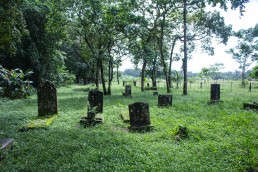
Where to Stay And Eat in San Juan de Nicaragua
There are few nice options to stay in San Juan de Nicaragua, Hospedaje como en Família and Jardín de Ramas. The two best rooms of the hospedaje are in a separate wooden house, standing on stilts above the river. They are simple but cozy and cost 20$/night. Beware a bit of this place, though, even though you’d have a confirmed booking with them, they can give it away if some bigger group appears and wants to stay there. This is what happened to us.
We had agreed with them for a new stay for one night on a later date, but when we came back they had given our room away and just gave us a “no room” -shrug! Clearly they don’t respect reservations, which is bad karma for them. From the owner, doña Martha, you can get much information about the area, if you speak fluent Spanish. Their restaurant serves good food, except the breakfast which was poor. But the hospedaje has a good value in general.
Jardín de Ramas has nice separate cabins few hundred meters away from Hospedaje como en Família. They’re also located on the river shore. A cottage costs 20$/night and offers more space. Neither of these places has a website, so you have to practice your Spanish skills and call for a reservation. For Jardín de Ramas you can also ask for “Fish” when you’re in town. He speaks good English, and his nephew owns the place.
One other place did the same thing to us than Hospedaje como en Família and didn’t respect our reservation – the Cabanas de Monkey. So beware them, too! Maybe trying to pay your reservation beforehand would help. Or it won’t, but you can always try.
Then there are the really shabby and run down places in town, like the Hotelito Evo, which I wouldn’t recommend to anybody. Unless you like to sleep with a lot of different bugs! Soda Tucán was also too shabby for staying a night (I speak from experience), but it serves very decent food at low prices. Note that there isn’t hot shower in any of these places, either. The only place having one is the super-expensive Río Indio Lodge.
Because the town of San Juan de Nicaragua is remote, you have to be prepared for some other inconveniences that it may cause. There are power-outs regularly throughout town in the evenings and sometimes even the running water may be cut off all of a sudden. So I’d suggest going for a dinner quite early in the evening to avoid a situation when there’s not electricity and restaurants cannot cook anything. Also, don’t leave from your accommodation without a good flashlight! When it gets dark around there, it’s really pitch black darkness, and you don’t want to misstep from the walkways into the marshlands!
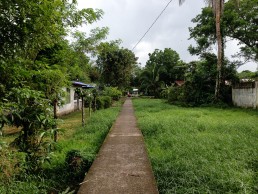
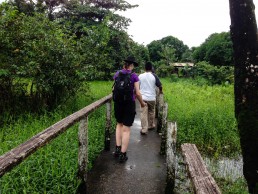
Sightseeing Around Greytown/San Juan del Norte
There are some interesting sights to see around San Juan de Nicaragua. Among the best of them are the four separate, little graveyards located just behind the airports’ runway. They have built the airport in the middle of the ruins of the old Greytown.
To get to the graveyards, you have to go with a local guide because they’re behind a military checkpoint. There are own cemeteries for Catholic, British, Americans and the Freemasons. The last is the most interesting one. It has been for the members of the St.John’s Lodge.
People buried in these graveyards were mainly officers and their family members who lived here during the days when Greytown was a busy trading post and pirates sailed along Rio San Juan. Nowadays they provide a glimpse into the past with their crumbled, old headstones standing there, forgotten and grassed.
Other interesting sights are the “Blue Lagoon” and a stretch of a sandy shore where you can see all the way to Costa Rica and where the river and the ocean meet. There is also a manatee lagoon a few hours’ boat ride away that you should go to see if you just have the time.
To all these sights a guide is mandatory, but these places are usually included in a single tour (except perhaps the manatee lagoon). The prices of the tours vary but prepare to pay something around 50$ (max). I could recommend you one good guide with whom we went. His name is “Fish”. He used to work in the expensive adventure lodge nearby, and he speaks very good English. Ask for him when you’re in town, everyone will know him and will get you in contact (and say hello to him from Piritta & Niina from Finland).
Guides are mandatory in this area because there are many military checkpoints around. You can’t get far without them stopping you and asking where and why you’re going. Drug smuggling is a big problem around this area, and that’s why the presence of the military is so extensive. The army’s job is trying to prevent the smuggling and protecting the local people.
Bizarre Fact
The original plan in the 19th century (by Accessory Transit Company & C. Vanderbilt) was to build a canal all the way through Nicaragua in here, Rio San Juan. This tower was for building that canal. But because of the Nicaraguan civil war and the American government deciding it didn’t want to give the canal to Nicaragua after all, it was never completed. The canal was built in Panama instead.
Gateway to Reserva Biológica Indio-Maíz
The main reason why people come to San Juan de Nicaragua is that it’s undoubtedly the best place to start a journey deep into the jungles of the Reserva Biológica Indio-Maíz – one of the most remote, wild and beautiful places of Nicaragua.
But it’s not actually near Indio-Maíz, though. Even the shortest of journeys into the Jungle Reserve will take about 6 hours’ boat ride from San Juan del Norte, along the Rio San Juan and further away along the Rio Indio. This is the deal if you want to visit some genuine places like Canta Gallo, where the indigenous people of Nicaragua, the Rama Indians, live. Their areas are hard to reach, but it will be worth the journey and the money. There is the real, wild, and genuine jungle! Here you can read our separate article about visiting the Rama Indians in Indio Maíz.
This little and remote town with three names has some weird charm. Many people will just pass through it on their way to Reserva Biológica Indio-Maíz, but it’s worth a short stay. Local people were very friendly and helpful. Just try your best to secure your accommodation bookings and you’ll have an excellent experience.
Landing to San Juan de Nicaragua [Video]
Landing to the tiny jungle airport of San Juan de Nicaragua – a gateway to Reserva Biológica Indio-Maíz.
Exploring the Abandoned Patarei Prison in Tallinn
The abandoned Patarei sea fortress and prison (Patarei Vangla), a place of empty hallways and dark cellblocks. This fortress has an impressive history. It was completed in 1840 and was originally a military fortress, but it last served as a prison which had a pretty notorious reputation.
The place still looks quite like it was left when the prison was shut down. It was just left to slowly rotten away. Patarei have been a Culture Park since 2007, but it seems like they’ve just recently started doing some slow renovations on the place. If you like abandoned, eerie places with some haunted feelings, you’ll love this place. It’s also a photographers’ dream location if you like some urban exploration photography.
Getting there
You can take a tram number 1 or 2 to Patarei from the center of Tallinn, or you can just walk by the “Culture Kilometer”. It’s only about 20 minutes walk from the harbor. The best thing about this place is that you can explore around entirely independently! You should also go as early as possible to avoid any potential crowds. It opens at 12 AM. Most of the times there won’t be any crowds unless you’re unlucky and happen to be there at the same time with some occasional tour group. Admission is only 3 euros/pp.
If you want, you can hire a guide. But they’re doing guided tours only for bigger groups at the time of writing this (10 people being the minimum). Either way, you’ll get more of an experience out of it, if you’ll just read a little bit of the history of the place, as well as from the legends and stories that are told about it and just go by yourself. Of course, you can ask tips from someone of the staff around if you’ll meet some. If you also happen to have a good flashlight, take it with you. You’ll need it if you want to explore the darker passageways inside.
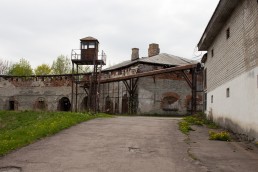
Places to See in Patarei Prison
The place itself is full of different kinds of cells, empty ones and ones with some furniture inside – rusted beds, tables, washing basins. There are halls with old movie chairs or rusted and broken typewriters. There is a library with dusted books still on the bookshelves. There are letters that the prisoners have written, still hanging on the walls of some cells.
There are also the prison guards’ quarters and the famous haunted places. This place has three storeys altogether, so it’s quite huge. It varies a lot what parts of the prison are open to the public to explore around. Sections which were open last week can be closed down on the next. If you visit more than once, you will probably get a different kind of tour each time.
The Most Haunted Places of Patarei Prison
The story goes that Patarei prison is haunted. So much suffering have happened inside its walls that it wouldn’t be a surprise if something has left behind.
One of the most haunted places in the whole prison is the old operation/surgery room. Or actually, there are two separate operation rooms. In both rooms there are the big, surgery operation lights still on the ceiling and in the other room, there’s a very strange looking operating table standing there, eerily alone.
There are also other equipment, odd looking machines with rusted meters, and broken tubes hanging loosely. Rotten bodies of iron beds, some of them with straps of bloody linen still on them. Many ghost stories are told about these rooms, and when standing over there alone, even in daylight, you can feel the very strange feeling hanging in the air. Like the time was standing still, or someone would be watching your every move. Even I would think twice about going there at night, in the dark – even though I’d love some good, old ghost hunting from time to time. I’m sure that from here you could get lots of haunting material if you’d dare to come at night.
On the bottom floor, there is also a chamber which is definitely haunted. A short, but narrow and dark passage leads to the tiny room with an arched ceiling, and there was a candle burning on the side of the passages’ entrance. Nothing eerie yet, this place is full of rooms like this. But – when you step over the threshold, you will feel a change in the air, and you can feel that “something” is definitely there.
You may get chillies over your spine, and you will even feel some occasional, but very real cold spots in the room, appearing all of a sudden. This is all classic ghost stuff. You will also feel the urge to leave the chamber as soon as possible. Like there would be something sinister, something that doesn’t want you there. It’s difficult to explain, just go and see for yourself.
And last but not least, there is the execution room. It looks like a cellar, and there’s a drain in the floor. It was used for the last time as late as in 1991. This room is perhaps the most shuddering of all. The air feels suffocating and after stepping in you will just want to leave very quickly. So many lives have ended here that you can only imagine what kind of energies have left in this tiny, airless room.
Photographing in Patarei Prison
This place is full of photo opportunities, for a photographer of any level. The lighting conditions can be challenging, though. But if you just don’t take the task too seriously you will get a lot of great frames. Just don’t forget to concentrate on the place itself, to the feeling it has inside its walls and to the stories that it wants to tell. Then, raise your lens and push the shutter. Afterwards, you can relax and grab a cold beer in the little bar located in the backyard of the prison – if it’s open – and watch the sea while you sip your drink.
In summary, you should not miss the Patarei prison and sea fortress when you’re visiting in Tallinn, Estonia because it’s easily one of the best sights in Tallinn!


